If you’re not at the innovation expo, techfest, or the library all weekend, are you even a Stevens student?
STEVENS SOFT LAUNCHES UCC MARKETPLACE DELIVERIES
We write Stevens history
The addition of the First-Year Experience course
Recent Texas mifepristone ruling
BY SANDRA MCDONALD, STAFF WRITER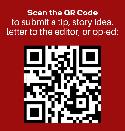
In 2000, the FDA approved the abortion pill Mifeprex, later approving the generic version in 2019. The drug blocks progesterone, a hormone needed for a woman to carry out a pregnancy. Despite this, on April 14, U.S. Court District Judge Matthew Kacsmryk from Texas issued a nationwide injunction to end the sale of it.
 BY EMMA SPOONAUER, STAFF WRITER
BY TASHA KHOSLA, FEATURES EDITOR
BY EMMA SPOONAUER, STAFF WRITER
BY TASHA KHOSLA, FEATURES EDITOR
In an Instagram post from Stevens Dining, it was announced that items ordered from the UCC Marketplace can now be delivered throughout campus. Delivery is offered only for dinner from 5 to 8 p.m. seven days a week. All students have to do is select the delivery option through the GrubHub app. However, an additional $3 fee will be charged for delivery.

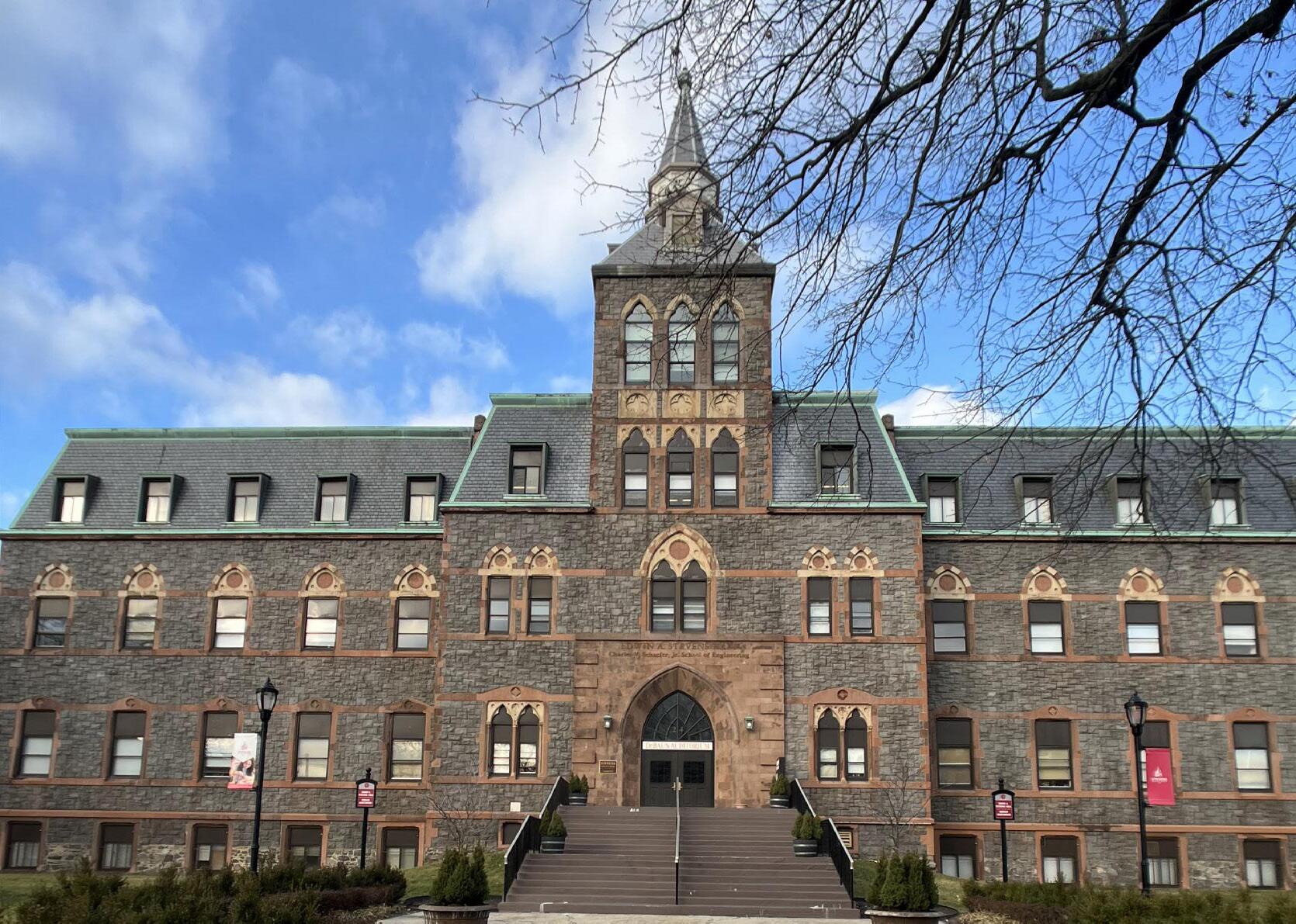
As of right now, there has not been an official email sent out by Stevens to provide more details about the delivery program. This has led to questions about how it will work. One big question is: how does this fit in with the Stevens meal plans? As many are aware, GrubHub links to student meal plans if they have one so items at UCC marketplace cost “1M,” meaning one meal swipe, rather than a dollar amount. So, how will this delivery fee be charged? Will it be the equivalent of a snack swipe added onto the meal swipe or will students with a meal plan need to use their DuckBills or own money to pay for this delivery fee?
Another question is who will be delivering the food. How will they gain access to residence halls? Every residence hall requires residents to swipe in with their DuckCards and the UCC towers in particular require residents to swipe
NEWS (2-3)
in twice. If these orders are being delivered straight to a resident’s room, how will that impact security within these residence halls?
Also, many question how beneficial this addition is to students. After all, a majority of on-campus residents live in the UCC towers and are simply an elevator ride away from the UCC Marketplace. Moreover, Stevens is a very small campus so who would want to spend an additional $3 to get food they could easily pick up themselves? It also does not help that this delivery service is only available for three hours of the day. As both Pierce Dining Hall and UCC Marketplace are open until midnight, many students eat later in the night, so this delivery service could be viewed as pointless.
Still, this is a very new offering and could be beneficial to students who may be feeling too unwell to get their food or for students who may not have a lot of time to pick up their orders. It could also help reduce the crowd of orders on the shelves within UCC Marketplace.
Only time will tell how effective this service will be. Hopefully more information will be provided to campus residents so they can maximize their use of their meal plans and be more aware of how exactly this delivery service will operate.

Looking back, almost every college student can agree that the transition from high school to college was a major adjustment. With Stevens specifically, its rigorous academic curriculum on top of its overwhelming amount of opportunities can make the school extremely daunting to navigate. In an interview with the Vice President of Student Affairs, Dr. Sara Klein, The Stute investigated the introduction of a new course that will aim to make this transition much easier for incoming students.
Surprisingly, Klein’s efforts to offer a First-Year Experience (FYE) course started all the way back in 2015 when, according to Klein, “along with a group of interested faculty and staff, [she] drafted an initial rational proposal and outline for the course,” but, unfortunately, at that time they did not have enough support to continue with the project. Thankfully, a few years later Klein proposed the idea again during a meeting with the Strategic Plan Steering Committee, and this time it generated a lot more “interest and excitement.”
Therefore, the creation of the course was included in
Should incoming freshmen be allowed to make their own schedules?
BY TASHA KHOSLA, FEATURES EDITORA recent email from Stevens announced that for the first time, incoming freshmen will be creating their fall semester schedules. As previously mentioned in the article “Scheduling 101: a guide to course registration,” freshmen were given a pre-made fall semester schedule and would create their own schedule starting in the spring.
To get a better perspective on how this change might affect students, The Stute asked current freshmen what their thoughts on this new policy were, as they were the last class to not create their fall semester schedule. The results were mixed with responses ranging from frustration that this was not done sooner to satisfaction Stevens for finally changing this policy.
A 1/4 Electrical Engineering major noted, “I wish they had done this a year earlier because I got screwed over as a commuter with 8 a.m. classes every day and large gaps between classes. Glad other freshman commuters won’t have to go through what I did though.”
Another student men-
tioned, “I think that this [is] a good idea since [students] can pick which professors they want [for] some classes. Since I have heard that different professors for some of my fall freshman classes were wildly different to mine.”
Still, there are students who expressed reservations about this new policy. One Quantitative Finance major explained, “I’m worried about how effective [this] will be. Freshman don’t have study plans yet, nor do they know where campus buildings are in relation to each other. Also, in what order will they be able to register for classes? The transition is stressful enough without adding choosing fall classes to it.”
On that note, one responder also remarked, “They should not be allowed to do this as they are not clear in what the process is yet and have not been taught how to do it. They are going to back up the advisors and clog the Workday system.” It is important to recognize that scheduling can be stressful. A lot of components such as understanding the study plan, course offerings, and
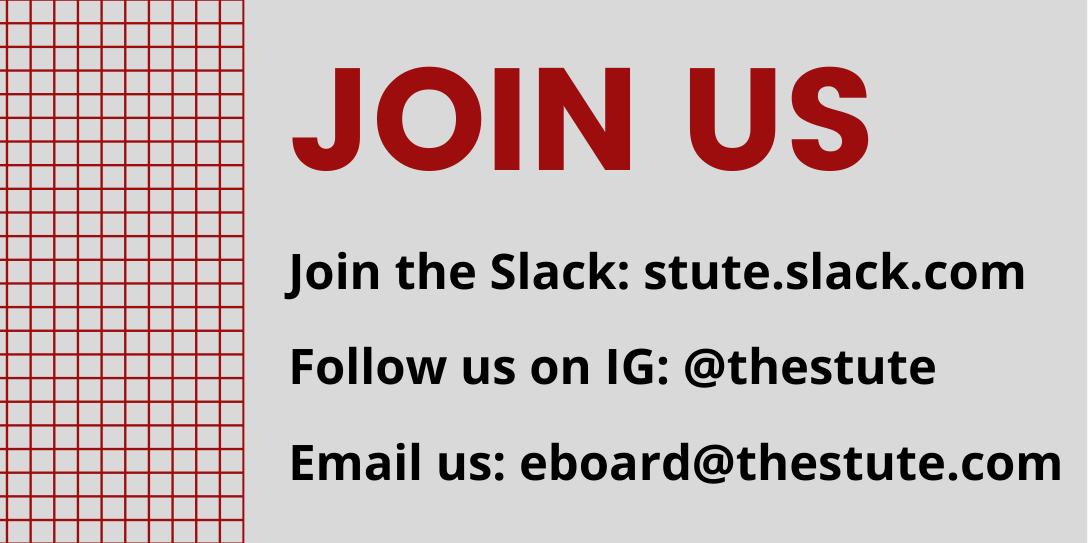
SEE CLASS PAGE 2
the plans for Stevens 2032: Inspired by Humanity, Powered by Technology.
When it was time to start developing the course, Klein joined forces with Vice Provost, David Zeng, for a year’s worth of work consisting of “developing the course content, syllabus, and materials; securing resources; and planning for the logistics of eventually offering nearly 60 sections of the course.”
As of now, the content is almost final and the course has been approved by all the necessary committees.
In her role as Vice President of Student Affairs,
SEE FIRST PAGE 2
Stevens pr0fessors speak out against book bans
BY KAYDEN CANNILLA, OUTREACH CHAIRPEN America, a free speech organization, published a report last week detailing the increase in book banning in America this past school year. It has been found that schools are specifically targeting stories related to race and sexuality. There are 113 bills proposed s across the country, including in New Jersey, where one bill would require parental notification of sexually explicit content in the curriculum. PEN found an increase in framing book bans under this justification which is often used to prevent LGBTQ sexualities from being discussed.
On May 3rd, the Stevens community will take part in a National Day of Action against the banning of books in libraries. The events taking place will inform community members about the fields of study most impacted by book banning: African American Studies, Gender
SEE BOOK PAGE 2
Medical professionals remark that the medication is less dangerous than Tylenol, and many studies over the last couple of decades support its safety and efficacy. Unfortunately, Republican officials are continuing to limit the use of safe abortion options, despite the plethora of research backing the approved drug.
Half of the abortions in the United States rely on this medication, and for many women it can be life saving. For now, the U.S. Supreme Court put a hold on Kecsmyrk’s ruling until they are able to review the case. Access to mifepristone is currently not limited, but is dependent on the Supreme Court’s upcoming decision.
Improper needle disposal in the UCC trash chutes
BY ADVAIT DANTULURI, STAFF WRITERStevens has announced to students living in the UCC Towers that syringes have been improperly disposed of in the trash chutes, which is causing a safety hazard. Chad Jones, Operations Manager of Residential Dining and Services, made the announcement via Roompact, saying, “Recently the janitorial staff has come across syringes while disposing of the trash from the trash chutes in the UCC. We are asking, for the safety of our janitorial team as well as any other individual that handles trash removal, that you properly dispose of your syringes in a sharps container. To obtain a sharps container please contact your physician. Thank you.”
Why is proper needle disposal so important? According to this article by the New Jersey state government, the improper disposal of home generated medical waste such as used needles
SEE TRASH PAGE 3
Masthead
Volume CXX No. 24
Executive Board
EDITOR-IN-CHIEF......................................ISABELLA ZIV ‘25
BUSINESS MANAGER............................TANYA AVADIA ‘26
MANAGING EDITOR.......................................AVA WANG ‘25
LAYOUT EDITOR................................NICOLE GIARDINO ‘25
OUTREACH CHAIR KAYDEN CANNILLA ‘24
DIGITAL MANAGER................................RAFAEL LEE LI ‘24
SECRETARY CLAIRE HANNAN ‘24
HEAD COPY EDITOR KEENAN YATES ‘24
Editorial Board
NEWS EDITOR.........................................BEN KNOBLOCH ‘25
NEWS EDITOR.....................................ASWIN AGUINAGA ‘23
SCIENCE EDITOR.........................................ERIN MCGEE ‘25
OPINION EDITOR............................EVAN PAPAGEORGE ‘26
SPORTS EDITOR........................................CHRISTA RUIZ ‘25
FEATURE EDITOR..................................TASHA KHOSLA ‘25
ASSIS. COPY EDITOR ISABELLA HAMM ‘25
Operations Board
HEAD PHOTOGRAPHER......................OLOF PERSSON ‘25
SOCIAL MEDIA MANAGER............VANESSA HUERTA ‘23
Staff & Contributors
Advait Dantuluri
Ben Ullrich
Chalres Beall
Chloe Brenna
Emma Spoonauer
Ethan Kleschinsky
Jordyn Ramelli
Josephina Strano
Julia Wierzbicki
Kyle Slendorn
Contact Us
Marisa Powers
Matthew Brantl
Rachel Abraham
Ruthie Mullisky
Ryan Erasmus
Sandra McDonald
Stephen Pachucki
Trevor Dameika
Victoria Yashchuk
Corrections
Disclaimer
All opinions and editorials reflect the views of their respective author(s). No Part of The Stute may be reproduced in any form, in whole or in part, without the written consent of the Editor-in-Chief. Cited references of The Stute are permitted.
Policy on Letters to the Editor
All members of the Stevens community are able to submit a Letter to the Editor to be published in The Stute. Letters must refer either to a piece published in The Stute or to The Stute in general and must be between 400 – 800 words in length. Submit letters to editor@thestute.com with your name and title (when applicable) or using our Google form. For writers who wish to write a Letter to the Editor anonymously, please see our policy on anonymity.

The Editorial Board reserves the right to choose whether or not to publish a submitted Letter to the Editor based on a majority rule vote, and additionally reserves the right to edit letters for clarity or request authors to revise. Provided that the author approves the final version, The Stute reserves the right to edit letters according to our copy editing procedures, defined in our policies.
Policy on Op-Eds
All members of the Stevens community are able to submit a standalone opinion piece (otherwise known as an Op-Ed) to be published in The Stute. Op-Eds must be between 400 – 800 words, but longer submissions will be considered on a case-by-case basis. To submit an OpEd please email eboard@thestute.com with your name and title (when applicable) or using our Google form (tinyurl.com/submit-t0-stute). For writers who wish to write an Op-Ed anonymously, please see our policy on anonymity.
The Editorial Board reserves the right to choose whether or not to publish a submitted Op-Ed based on a majority rule vote, and additionally reserves the right to edit Op-Eds for clarity or request authors to revise. Provided that the author approves the final version, The Stute reserves the right to edit Op-Eds according to our copy editing procedures, defined in our policies.
FIRST CONTINUED FROM PAGE 1
Klein is responsible for overseeing all of the offices within the Division of Student Affairs, including the Career Center, Undergraduate Student Life, Student Support, and much more. In the detailed summary of her role on the Stevens website it mentions that “she is passionate about student learning and development and maintains an unwavering commitment to nurturing a safe, healthy, inclusive, and welcoming campus community,” explaining her hard work and dedication when it came to the creation of this new course.
CLASS
CONTINUED FROM PAGE 1
the campus itself play a role in the process, which can understandably make scheduling a bit stressful.
Computer Engineering student Aidan Sprigle discussed both sides of the topic. Sprigle mentioned, “I think it is unfair that we didn’t get this opportunity sooner, I know a lot of people who would have liked to change their schedule around. On the other hand, I think this is great. Not only do incoming freshmen now have more flexibility in their schedule, but they also get earlier experience into how the schedule making process works.”
This fall, we will all see how this new scheduling process will work and play out. As of right now, student opinions differ on the
BOOK
CONTINUED FROM PAGE 1
Studies, and Feminist Theory. The course of events can be seen in the accompanying flier.
Klein explains that, “Each section will be jointly taught by a faculty and a staff member with enrollment capped at below 20” and “ a pilot section of the course will be co-facilitated by Dr. Zeng and me in [the] fall of 2023.” Starting in fall of 2024, the class will be required for all first-year students for their first semester, and those who cannot take or finish it in their first semester will be required to take it in their second semester.
When asked what the course will cover, Klein detailed that, “It [will create] an opportunity for dialogue and discussion amongst peers, faculty and staff in a small group setting as students learn about themselves in the context of the Stevens experience. [...] Stu-
dents will learn essential skills for success in college, including leadership skills, cultural competence, ethical decision-making, academic and career development skills, personal wellness, and how to access campus resources.”
Overall, Klein’s aim for this course is that it will help incoming students make a connection between Steven’s history and opportunities as well as individual students’ personal goals and vision for their next four years and beyond. Even though this change will not affect Stevens’ current students, it is important that we recognize how it can improve new students’ wellbeing, therefore impacting the future of this university.
topic and hopefully over time the scheduling process will become more efficient and a more positive experience for all students.

Black Skin, White Masks is a docudrama about anti-colonialist theorist Frantz Fanon, who discussed the psychological impact and internalization of racism. Space is the Place is an afro-futurist science fiction film, which challenges ideas of race and iden-
tity in power structures. There will also be opportunities to discuss with Professor Swindall, Professor Benezra, and Professor Dayal their courses of specialty: African American Studies, Gender Studies, and the history of American Literature.

TRASH

CONTINUED FROM PAGE 1
can injure small children, pets, and wildlife, and although rare, it can also result in serious diseases such as Hepatitis B and AIDS. New Jersey has a law regarding the disposal of needles, stating that a person using a needle is prohibited from discarding disposable/ reusable needles in public/private places accessible to other people without properly destroying it first. Failure to properly destroy a needle can result in a $500 fine
and/or imprisonment.
How can you safely dispose of syringes and needles? The New Jersey Hospital Association is working with local hospitals to offer a program to safely dispose of such items for a small, one time fee by offering rigid containers for proper disposal. The container must be returned to the local hospital and be full in order to receive a completely new, empty container, with specific steps to dispose of the container. If you are not interested in working with your local hospital, this article by safeneedledisposal.org provides specific steps detailing what you
ought to do: put used sharps in a strong, plastic container and fill it until it is three-fourths full, before sealing it and placing a “DO NOT RECYCLE” label on it. Then put the container in the trash to get it picked up.
Proper disposal is the key to creating a healthy and safe environment for others and to prevent them from being accidentally infected by an improperly disposed needle. It is important to follow these steps and not take them lightly, otherwise there would be severe consequences for you and for the people around you.
Russ Rogers appointed as Assistant Vice President and Director of Athletics and Recreation
 BY EVAN PAPAGEORGE, OPINION EDITOR
BY EVAN PAPAGEORGE, OPINION EDITOR
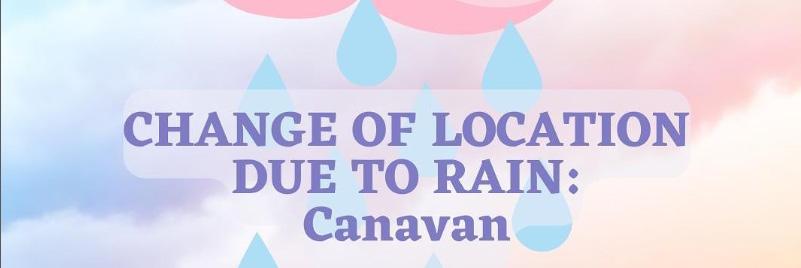
Memes
The semester is almost over and finals are approaching. This can be a stressful time of the academic year, so here are some memes to brighten your day.




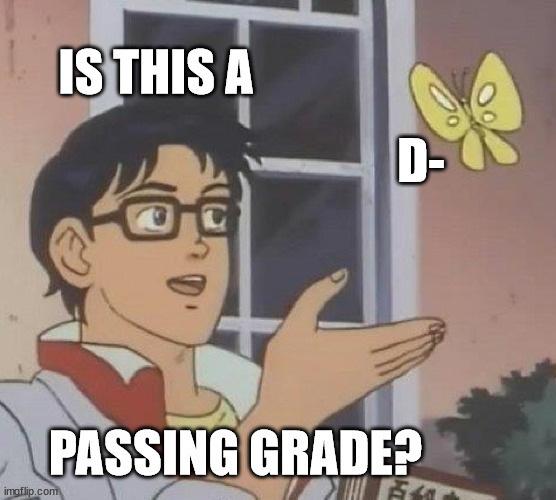
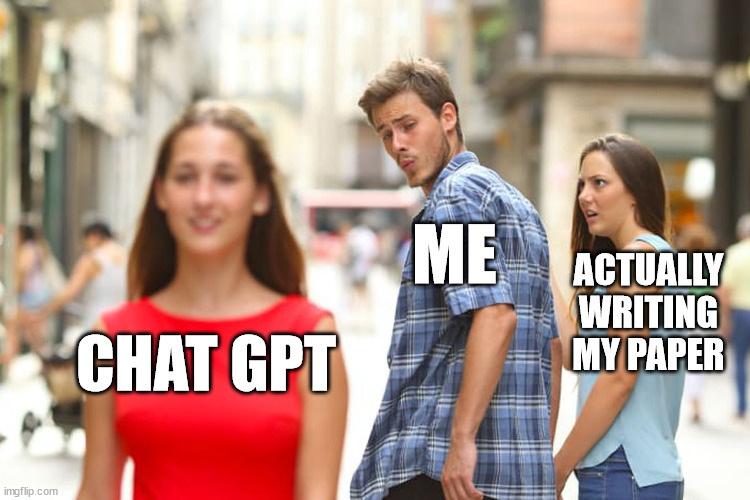
Here at Stevens, different departments combine to make a functioning school. Each department reports to a different Vice President sitting in President Farvardin’s cabinet. One of these departments, Athletics and Recreation, recently received a new leader. As announced in a release from Stevens, Stevens’ own Russ Rogers has been appointed as Assistant Vice President and Director of Athletics and Recreation. Rogers has been at Stevens
since 1995, acting as the Director of Campus Recreation, and since July of 2000, as the Director of Campus Recreation. During his tenure here at Stevens, Rogers has led the Ducks from the “Empire 8” Conference to the Middle Atlantic Conference, the first National Collegiate Athletics Association team championship with the men’s volleyball team in 2015, and received accolades like finishing in the top 50 in the National Association of Collegiate Directors of Athletics (NACDA) Learfield Directors Cup standings 13 times, including each of the last 13 years the cup has been awarded.
The Stute reached out to Rogers. When asked what this new role meant to him, Rogers explained he is, “very fortunate and thankful to be in this role. It is not something I take lightly, and I know that many people would love to do what I have the privilege of doing every day. There is a significant level of responsibility that comes with this job, and I am driven to do all I can to represent Stevens in the best possible manner.” Rogers then explained that in his new position, he will, “work every day to put our coaches, student-athletes, and staff in the best position possible to achieve these
goals. Some of them include fielding one of the nation’s top NCAA Division III athletic programs on an annual basis; making further progress in efforts to improve the quality of our athletic and recreational facilities; continuing to expand the activity level and quality of the campus recreation program; and most importantly striving to ensure the student experience is greatly enhanced through their participation in athletics and/or campus recreation.”
In his new role, Rogers explained that the most important part of his duty is to continue learning, noting that, “the importance of empowering the members of our department - coaches, staff, and student-athletes - through listening to them and doing everything possible to support their hard work.”
With most of the students on campus being involved in either the athletics program or using the recreation facilities, Rogers understands the importance of his new position. He says he understands that his department is “never going to be perfect,” but encourages any students with any questions or concerns to reach out to help make Stevens athletics and recreation as good as possible.
MUSIC AT STEVENS
A deep dive into Stevens’ underground music scene
 BY KAYDEN CANNILLA, OUTREACH CHAIR
BY KAYDEN CANNILLA, OUTREACH CHAIR
Hoboken has a rich music history, from its favorite Frank Sinatra to the iconic underground venue Maxwell’s, and in modern days Stevens students have become a unique subset of the Hoboken music scene. There are a variety of clubs and extracurricular activities where students can express their own creative talents or take in the Stevens’ music scene. The Stute spoke to Chloe Brenna (she/her), affiliated with Stevens Underground Music Appreciation Committee (SUMAC) and campus radio WCPR, and Shelly Ferina (she/they), President of the Audio Engineering Club (AEC) about the current state of local music.
Both Brenna and Ferina commented on the niche that Stevens’ musicians find themselves in; while live music is still present in Hoboken, it’s more subdued since the closing of Maxwell’s in the 2010s. Young
performers can still find gigs at a select few bars: Willie McBride’s, 8th Street Tavern, and Farside Tavern, though these are limiting because the under-21 crowd can’t support all of their friends. “For being such a cool, vibrant, young city, Hoboken is seriously lacking young music… there is no sense of scene, if there is, Stevens is not connected to it,” Brenna comments. Current Hoboken nightlife is much more receptive to 80s rock cover bands, and is less so a place for young people to try out their own sound. Student performers instead find gigs in New York City, or at on-campus events, making Stevens a diverse and vibrant place for Hoboken music culture to develop.
AEC hosts open-mic nights frequently throughout the semester, giving any student who wants to perform the time and space to do so. Ferina reports that most acts perform with a full-band setup, though others use backing tracks. Many performers are rock artists, fitting with their Hoboken ties, though the
proximity to New York and the fact that Stevens students are often not native to the area allows for a wide variety of influences. Open mics on Babbio Patio allow for any student or Hoboken resident to stop and enjoy the music, and the view cannot be oversold. “There is nothing quite like playing a show in front of the NYC skyline; Hoboken has a magical feel to it,” says Ferina.
While many of the performers are students in the Music and Technology program, SUMAC, AEC, and WCPR provide a place for interested students to create and enjoy music separate from their studies. Ferina describes how the lessons she learns in class “have become increasingly relevant to the ways that I approach music.” The curriculum offers extremely practical lessons for aspiring musicians, with classes in music theory, recording, private lessons, and extracurricular performances that allow students to independently manage their equipment and set up for a show. The scene remains accessible to those outside of the
INTERVIEWS WITH THE ARTISTS
BY BENJAMIN KNOBLOCH, NEWS EDITORphendste, the oneman passion project
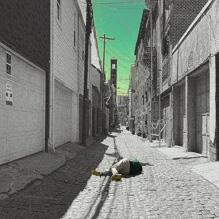
“phendste” (pronounced “Fend-STEE”) is deeply personal to Stephen Dranto, so much so that its name is composed of fragments of his own. But it didn’t start as a passion project, according to Dranto, who said he originally wanted a name under which he could demonstrate his capabilities to other producers, songwriters, and artists.
“I wanted to release a song a month in 2021,” said Dranto in an interview with The Stute. Originally, he noted, he hoped phendste would merely be a launching point for collaborations with other artists. “But quickly I realized that I couldn’t keep up with that pace. [...] I knew that if I wanted to release music again, it had to mean something more.”
And so, phendste shifted to be something that Dranto would turn into wholly his own. “All the songs I’ve written and released have always been very close to my heart, and sometimes I’m really scared to release them. But there comes a time where that fear of judgment is overshadowed by the potential a song can have when others listen to it.”
Audiences responded to Dranto’s commitment to authenticity after the August 2022 release of his 7-track EP “under the rug,” for which he collaborated with Vadym Pastukh, Sam Sherwood, Diego Ignacio, and artist ZCO on select tracks. The EP’s second single, “i’d find you,” became phendste’s breakout hit, racking up over 2 million YouTube views and 4 million Spotify streams.
“I had taken a long break from sharing anything on social media and releasing music, kind of cutting off communication from the online world for a year,” said Dranto. “The first track on the EP sets the tone where I want to be more personal in my music, and talk about things that I would usually sweep ‘under the rug.’”
Such success and personal growth didn’t come without its challenges. As a single-member act, says Dranto, he has to worry about “promoting my own music, producing, songwriting, engineering [...] On top of that it can feel really isolating doing these things. I have started to work more with others, trying to build a team around my strengths and weaknesses.”
Now is a better time than ever to tune in: phendste is performing at the Stevens Innovation Expo on April 28 for the first time since last September, and will be releasing a new single called “no flowers” on May 12, which Dranto hints is part of a larger project currently slated for July. This summer, he’s planning to hold multiple concerts in New York City with a full band. Check out phendste now on YouTube, Spotify, Apple Music, and other music streaming platforms.
Business Radical is shifting the paradigm
If you’ve been tuned in to the Stevens music scene in recent months, chances are you’ve heard of Business Radical, the pop rock band made up of Stevens sophomores that’s increasingly popular on campus. The Stute spoke with Meghan Slate, lead vocalist of “Biz Rad” to give students the scoop on who the rising band really is.
“Most of us are or were Music Tech students at one point,” said Slate, describing how the band formed as a group of close friends who decided they wanted to make music together. “I wanted to form a band, and I was good friends with Jack. I asked him, and Jack was friends with Oscar…”
The band now consists of six members: Meghan Slate, lead vocalist and bass-player; Shelly Ferina, lead guitarist; Oscar Diaz, drummer; Jack Scherban, keyboardist, vocalist, and described by Slate as Biz Rad’s “Jack of all trades”; David Van Hise, who plays the Electronic Wind Instrument (EWI), which helps to give the band its unique sound at performances; and Cole Spitzner, Biz Rad’s newest member and a bassist and guitarist.
Business Radical often highlights that it’s a band of best friends, but Slate acknowledges the difficulties of maintaining a relatively large music group with members of wildly varying musical tastes. “When we release music we want to make sure that every single person in the band likes it and approves of it, which can be hard. [...] Since we are friends, it’s easy to meet, but again since it’s a lot of people it’s hard to combine all our schedules and find overlapping free time. [...] Luckily, everyone is good to just try something new.”
But in the end, Slate says, “[What] can help us with our performance especially is that we’re all friends, so when I’m up there if I get nervous I just look at my friends, and it’s like we’re rehearsing and just having fun. Hopefully people see that as well.”
Biz Rad has become a regular fixture at open mics hosted by the Audio Engineering Club (AEC), and Slate says that’s because the band loves the open, casual environment of these events. Recently, though, Biz Rad also made an appearance at Battle of the Bands, the competition between Stevens-original acts. “It was amazing to perform with all of the other talented musicians at Stevens,” Slate said. When asked about future performances, she hinted, “We’re currently looking to play off-campus because we’ve never done that before, and so if you follow our Instagram you can find out more about those gigs.”
The group’s most recent single, “Bug Bites,” became a hit after it was performed at Battle of the Bands, racking up over 1,000 streams on Spotify very soon after its release. “‘Bug Bites’ took a long time to shape,” said Slate about the making of the song. Jack started it last spring. He had this idea and I remember he played it to me over the summer. I had an idea for the second verse, that it could be two people speaking.” That hook of the song gave it its energy and dynamic quality. “It’s a really fun song, and it’s one of my favorite songs that we’ve made.”
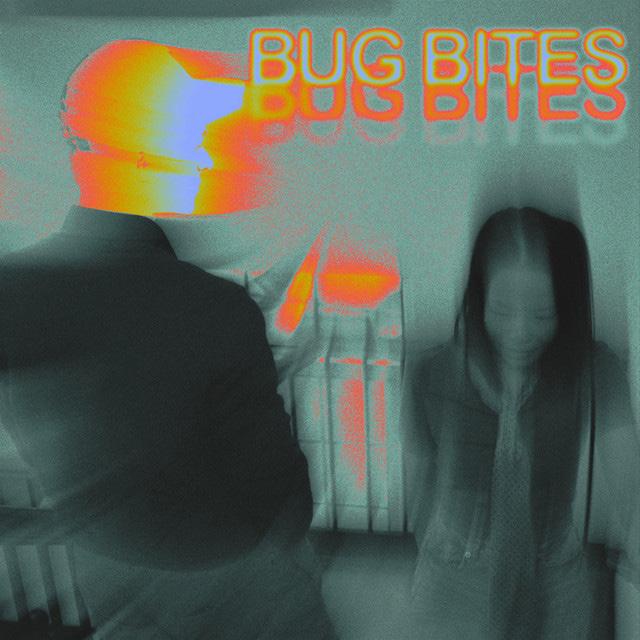
Stevens students can look forward to more performances and new original releases from one of campus’s most popular acts. Check out Business Radical’s singles “Gravity Sender” and “Bug Bites” right now on Spotify, Apple Music, and other music streaming services.
program: Brenna is an Engineering Management major and attributes the passion for creating music of many Stevens students as a means of coping with rigorous academic demands. The people who make up the community are fundamental to the overall experience of the scene, according to Ferina: “This community is a special bubble that feels fairly separate from the rest of campus culture, as we all know each other and work together. I believe that students who walk by and unexpectedly hear live music are naturally drawn to our events. The music and the free pizza are then an incentive to stay. The consistent people who run the events or play at them, however, come for the community.”
Brenna said that, in choosing bands to perform on campus through SUMAC, she chooses ones that people “need to hear, I wish more people knew about them,” many of the artists being LGBTQ. These acts fall under the broad spectrum of alternative, from bubble-grunge, indie-alt, and shoegaze,

to hardcore metal. Because underground music, by nature, features lesser-known bands, Brenna’s objective when choosing acts is to introduce listeners to their potential new favorite band. She suggests students who attend local concerts scout out bands that might be interested in performing and refer them to SUMAC, describing how speaking to Hotline TNT after a show she attended led to them performing last semester. She hopes that Stevens can foster the music scene by making these shows more open, as it was pre-pandemic. The Stute reported in March 2003 that a five-hour SUMAC show in the Bissinger room hosted 300 people, an estimated 50 of those being Stevens students. Stevens is an integral part of the evolving Hoboken music scene, especially as a place for the under-21 crowd. Organizations like AEC and SUMAC have been contributing to the scene for decades, building a lively, eclectic community for music culture and young talent to thrive.
Recent Releases
Stevens artists have been very successful with their releases on streaming platforms this semester. Here are some of the most recent releases:
Credit by Butane
Single released April 14, 2023
Members: Jack McDermott (‘23), Sam Sherwood (‘23), Michael Hoovler (‘24), Mark Huggins (‘24), Alec Pagano (‘23), Jack Piccirillo (‘24)
Gravity Sender by Business Radical

Single released March 17, 2023
Members: Meghan Slate (‘25), Jack Scherban (‘25), Oscar Diaz (‘25), Shelly Ferina (‘25), David Van Hise (‘25), Cole Spitzner (‘25)
THE FABLED HAPPY BIRTHDAY EP by Twin Dolls
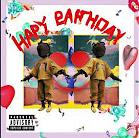
EP released April 1, 2023
Members: Belal Eltemsah (‘26), Daniel Martinez (‘26), David Menendez (‘26)
Bug Bites by Business Radical
Single released March 31, 2023
Members: Meghan Slate (‘25), Jack Scherban (‘25), Oscar Diaz (‘25), Shelly Ferina (‘25), David Van Hise (‘25), Cole Spitzner (‘25)
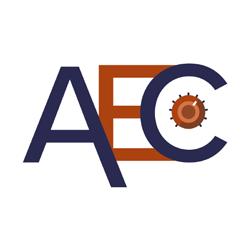
Ice Spice Club Remix by Jodonut

Single released March 20, 2023
Members: James Hooker (‘26)
Short Hills Mall by 622chaos
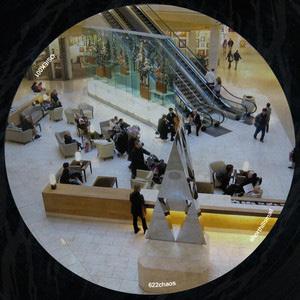
Single released March 12, 2023
Members: Zachary Berkowitz (‘23)

Cyclops by Sahil Navani
Single released April 28, 2023
Members: Sahil Navani (‘26)
Swing Tune/Double D by The Vibrotones

Single released March 10, 2023
Members: Jack Hamilton (‘25), Kevin Swanson (‘25), Jack Keelan (‘25), Ryan Swanson (‘24)
What are the Stevens Concert and Jazz Band working on? An interview with Jerry Ficeto
BY AVA WANG, MANAGING EDITORA discussion of Stevens musicians would not be complete without mention of the Stevens Concert Band and Jazz Band.
The Stute recently had the opportunity to interview the Director of the Stevens Jazz Band and Conductor of the Stevens Concert Band, Jerry Ficeto. Ficeto’s passion for music and his students’ success is evident. His mission, since his arrival to Stevens in 2004, has been to provide musical experience to everyone at Stevens who is interested, whether their interest lies in musical performance, appreciation, or supporting the arts in other ways.
The Stevens Jazz Ensemble consists of musicians of all skill levels, and Ficeto noted that the group does a great deal of musical sight-reading. Sight-reading allows the ensemble to explore rhythmic and tonal concepts whilst gaining exposure to a wide range of jazz pieces, old and new — an environment Ficeto works hard to foster. “I find it extreme
ly important that the group have a diverse repertoire because there are not many opportunities any more to perform or be exposed to the different forms of the true American art form, jazz,” he shared.
The Jazz Band is currently working towards their upcoming performance on Friday, April 28, 2023 at 8 p.m. in DeBaun Auditorium. The program will consist of approximately 20 selections, ranging from classical jazz by Charles Mingus, John Coletrane, Hoagy Carmichael, Rodgers & Hart, and George Gershwin, to more contemporary compositions from artists such as Quincy Jones. Works from popular artists such as Steely Dan, Earth Wind & Fire, Sting, and Bruno Mars will be featured, as well as improvisation from the members of the band.
Vocalist Adriana Aguirre, alto saxophonist Matthew Oyales, tenor saxophonist Jason Ho, and keyboardists Brandon Lim and Kyle Marcadaeg, are set to feature on multiple of the night’s selections. Stevens students are encouraged to support the Jazz
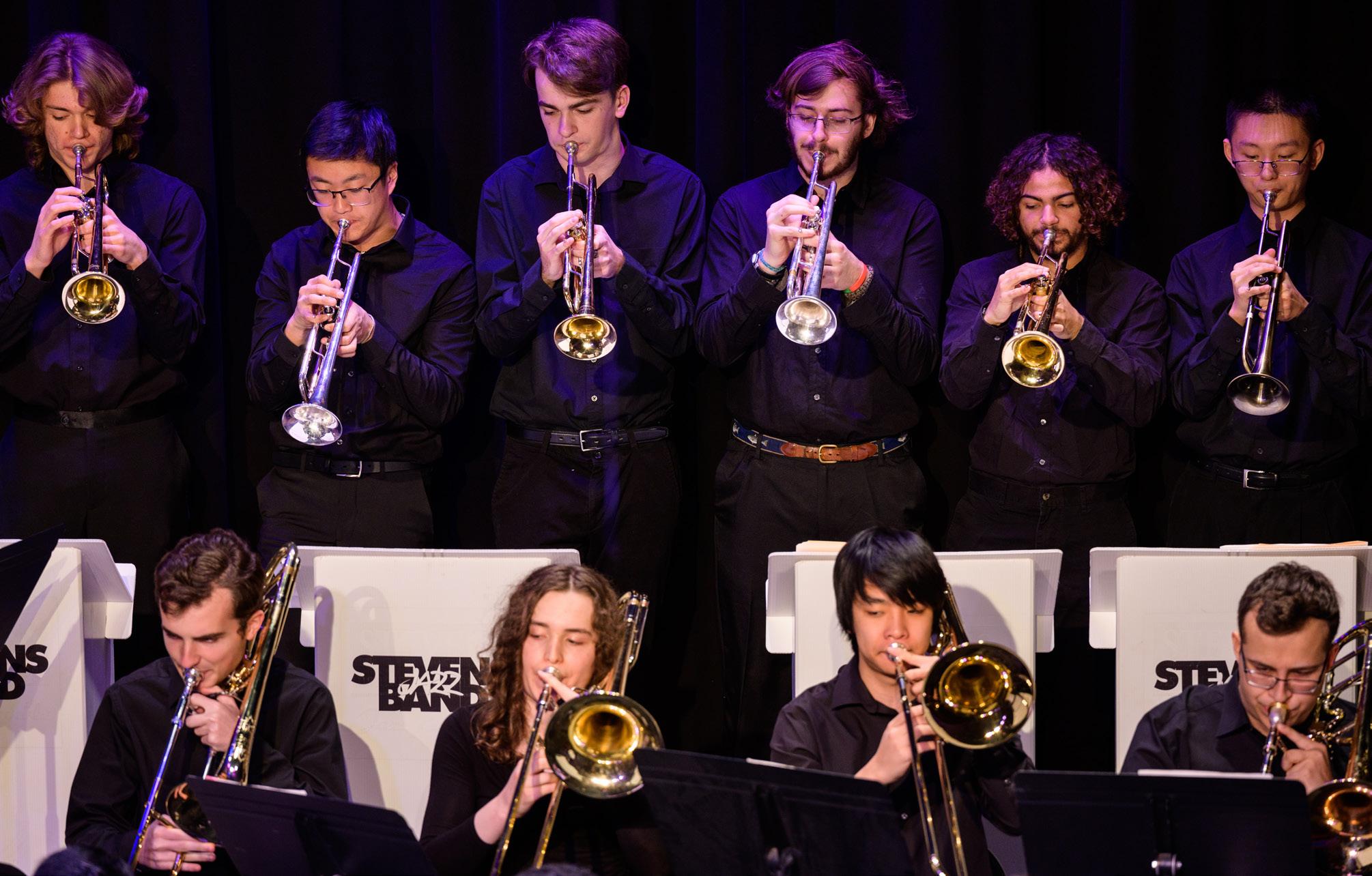
What is the Stevens orchestra?
Band by attending the upcoming concert. Admission is free with Stevens I.D.
The Stute wishes to congratulate the talented Stevens Concert Band, Brass Ensemble, and Saxophone Ensemble on their accomplished performance last Saturday, April 22 2023. The Concert Band program featured challenging compositions by Gustav Holst, John Philip Sousa and Claude Debussey, and the world premiere of “So the Mortar Burns” by Stevens student composer Thomas Ward. Soloist performances included:
“Cinema Paradiso” performed by Yuri Usakarn Anantuasub (alto saxophone)
“The Girl with the Flaxen Hair” performed by Winston Lee (English horn)
“You Raise Me Up” and “I Dreamed a Dream” performed by Adriana Aguirre (vocalist)
Students interested in performing the aforementioned ensembles, or assisting in technical/ support roles are encouraged to contact Jerry Ficeto by email at gficeto@stevens.edu.
BY EVAN PAPAGEORGE, OPINION EDITORAmong the many groups of talented musicians here at Stevens, one that must not be forgotten is the Stevens Orchestra. As one of the main ensembles of the DeBaun Performing Arts Center, the orchestra offers an opportunity for students to participate and play in a classical setting, regardless of their skill level, instrument, or musical preference.
An orchestra is a composition of instruments, mostly classical, that focuses on instrumental pieces. Orchestras are made of different sections. One is strings, which contain violins, violas, violoncellos (or simply cellos), and contrabasses (also known as double basses or just basses). Next are winds, which typically consist of flutes, clarinets, oboes, and occasionally bassoons or saxophones. Then, there is the brass section, which can include French horns, trumpets, trombones, and tubas. The final section is the percussion section, which typically includes timpani, cymbals, snare drum, and bass drum but can range to a wide selection of instruments (even as far as non-typical instruments like the typewriter, which was recently played by the Stevens orchestra’s percussionist at their last concert).
The repertoire that the Stevens orchestra performs is also primarily of the classical genre. The classi-
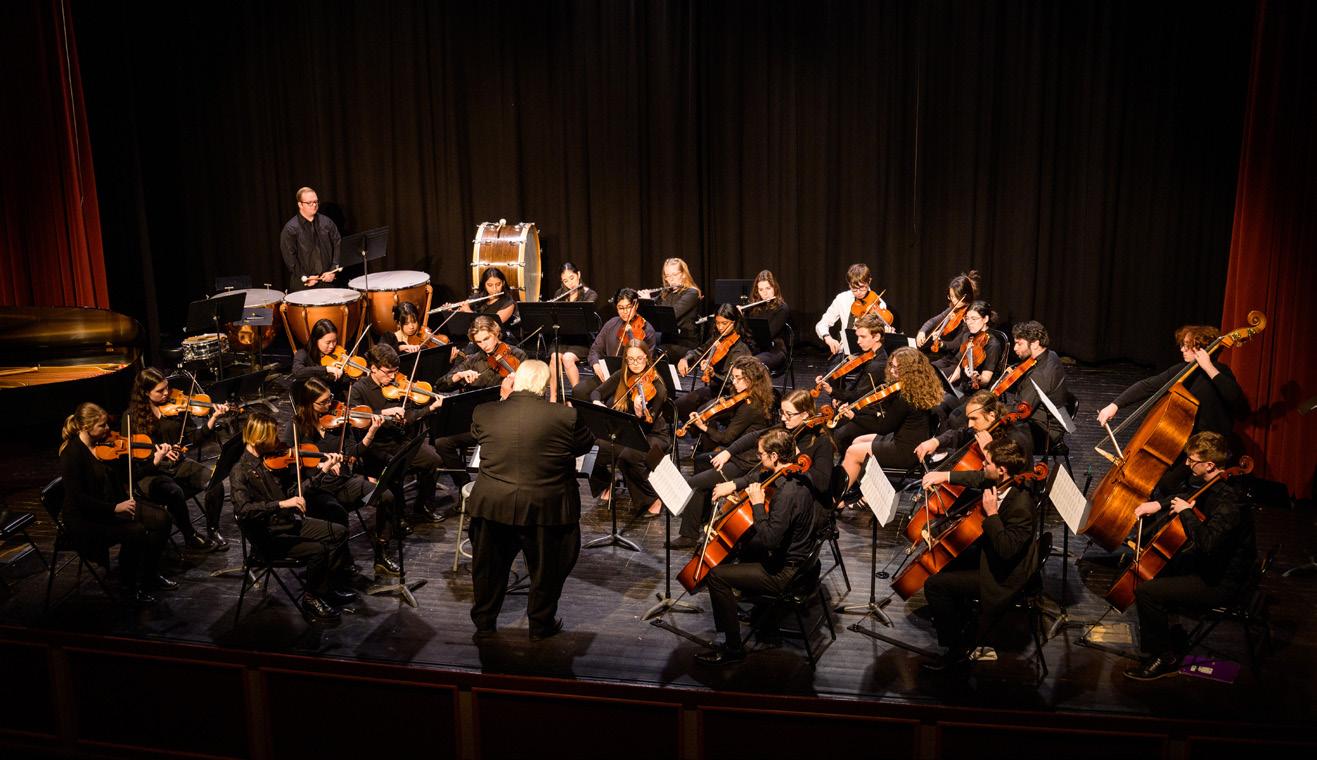
cal genre, while being sometimes difficult to define exclusively, typically refers to the Western Genre of “art music,” with most pieces being composed from the 1400s to today.
The Stute reached out to the Stevens Orchestra Director, Steve Rochen, to learn more about the orchestra and the opportunities it offers Stevens students throughout the year. Rochen explained that the main mission of the orchestra here is to “provide a way to develop musical technique, musicianship, and camaraderie through our ensemble at the school.” Rochen explained the performance opportunities for students, saying, “The group performs twice a year and has had members invited to play in other venues and occasions are affiliated with the school.” Other than their two concerts, one typically towards the end of the fall semester and the other towards the end of the spring semester, the Stevens orchestra also provides musicians to different events around campus as Rochen explained, like faculty events and student events such as Fall Fest earlier this year.
Rochen explained that the orchestra is welcoming new members, though they would need to play a classical instrument. Rochen directs students to keep an eye out for flyers at the beginning of each semester about how to join the orchestra, or any Stevens ensemble, or to reach out to the director to learn more.
What is the Stevens Choir working on? An interview with Dr. Bethany Reeves
BY AVA WANG, MANAGING EDITORThe Stute’s spotlight of Stevens musicians would not be complete without mention of the Stevens Choir. The Stevens Choir is a remarkable ensemble made up of talented singers who are passionate about music and love to share their talents with the community. Music Program Coordinator and Director of the Choir, Dr. Bethany Reeves, leads the group. Reeves heads the ensemble’s rehearsals and performances, plans concerts, and selects the musical ensemble’s repertoire, and was delightful to interview.
In her recent interview with The Stute, Dr. Reeves informed that the Choir is currently working towards their upcoming spring concert, titled “A Little Night Music,” set to commence on April 29 2023 at 8 p.m. in the DeBaun Auditorium. Reeves makes a conscious effort to unify pieces from a diverse range of time periods and genres, and the upcoming concert’s sphere is
no exception. She selected a varied repertoire including an a cappella adaptation of Mozart’s renowned composition, “A Little Night Music,” a contemporary classic with neo-Renaissance elements by Ola Gjeilo, and a challenging vocal jazz piece that has earned a Grammy award. “There will also be two songs featuring a small percussion array (‘Stand By Me’ and ‘Wimoweh/The Lion Sleeps Tonight’), and several other pieces with lush piano accompaniments provided by the Choir’s longtime pianist, Stephanie Safko,” Reeves further informed.
The “A Little Night Music” concert will feature a multitude of talented soloists, including Adriana Aguirre, Corey Batchelder, Charlie Beall, Valerie Calligy, Cameron Clifford, Isabella Cruz, Nicholas Hite, and Kayleigh Kubit, as Reeves informs, the majority of whom will be graduating this semester. “[The soloists’] repertoire includes the glorious and very challenging ‘Tonight’ Quintet from ‘West Side Story,’ the lovely duet-with-chorus ‘Belle Nuit’ from
President’s Ensemble
BY TANYA AVADIA, BUSINESS MANAGEREven though Stevens is primarily a tech-focused school, there is still a profound love for the arts. There are many organizations on campus that deal with the display of the arts and every student has the opportunity to see first-hand the amazing performances put together by their peers. One of the aforementioned organizations is
the President’s Ensemble. The President’s Ensemble is a unique group of students who showcase their musical talents at the request of the President at large scale events such as Commencement, Admitted Students Weekend, Board dinners, and alumni events. The Executive Director of University Events, David Zimmerman, was the founder of the President’s Ensemble. Zimmerman, who at the time was the Director of DeBaun Performing Arts Center,
the opera ‘The Tales of Hoffmann,’ and Schubert’s great, dark art song ‘Erlkönig,’” shared Reeves.
These talented soloists dedicate an abundance of time studying their craft under the guidance of Dr. Reeves both at Choir rehearsal and in the DeBaun Voice Studio.
Choice soloist work has been selected to be further celebrated and featured alongside exceptional Stevens vocalists at the upcoming Honors Voice Recital, scheduled for May 6 at 7 p.m. in DeBaun Auditorium. The Honor recital’s repertoire similarly covers a range of time periods, from classical works to a modern Broadway staple.
For those interested in joining the Choir, there are brief, private auditions held at the beginning of each semester. Dr. Reeves welcomes students to contact her at breeves@stevens.edu for more information, and mentioned that membership in the Stevens Choir is a prerequisite for study in the DeBaun Voice Studio, where students are provided with the opportunity to receive vocal lessons free of charge.
started the President’s Ensemble after Dr. Farvardin was appointed as the President of the school. Zimmerman brought to life President Farvardin’s vision of having “students present their musical talents at special events.”
The President’s Ensemble has a set of songs that they sing every year with several new songs added to the repertoire on a semesterly basis. The eligibility to audition for the President’s Ensemble is that a student must be an undergraduate
All are encouraged to attend the upcoming “A Little Night Music” concert on April 29 at 8 p.m. and
the Honors Voice Recital on May 6 at 7 p.m. Admission to concerts is free with a valid Stevens ID.

who is not a senior. Other requirements include: ability to learn music quickly (knowing how to sightread is a plus), being able to hold their part well while also blending into the group and having a strong voice. Currently there are 16 members of the President’s Ensemble, but not everyone is required to perform at every event. Similarly, due to the differences in everyone’s schedules, practice happens in smaller groups routinely but all members are expected to practice
on their own time and learn the music.
Auditions for the President’s Ensemble typically happen in February, but due to the large number of seniors graduating this year, auditions will take place in the fall semester. Therefore, if you share a passion for music and performing, audition for the President’s Ensemble or stop by an event where they are performing and see them in action.
Kaitlin Gili presents on quantum cognition Can plants communicate?
BY EVAN PAPAGEORGE, STAFF WRITER
Innovation is at the forefront of classes, research, internships, and the future of Stevens graduates. This concept motivated recent Stevens Physics graduate and the current University of Oxford Ph.D. student Kaitlin Gili to presentw a series of lectures here at Stevens, exploring Quantum Cognition and Machine Learning.
Throughout April, Gili has given presentations to the Stevens community on Wednesday afternoons during the academic break. Amongst members of the Stevens physics department, computer department, and more, Gili explained different topics of quantum cognition, the science behind those ideas, and their application.
Gili has experience as a student at Oxford along with research at Los Alamos National Laboratory, as well as other research institutions around the world.
The Stute spoke with Gili about her presentations. She explained that rather than a particular theory or phenomenon, she hopes students will come away with a sense of curiosity, explaining she wants to, “show students that there are topics like quantum computing and machine learning that are just fundamentally fascinating. We train quantum particles to learn data” and continued to explain how she wants to “give students a glimpse of a different kind of ‘career path’ they could take.” Gili hopes to make an environment “that is less
about producing a product or making a financial gain, but is more about asking questions about fundamental things in the universe [...] I want to create an environment that ignites that feeling.”
Rather than explain quantum cognition through the traditional classroom styles, Gili chose to use a more innovative and interactive method that allows for an interdisciplinary understanding. She wanted, “to show students and faculty that there are connections to be made across fields: physics, computer science, math, psychology, and neuroscience. We always think of psychology as a very different science than physics, but I see that there are similar structures that exist in each. The mind is fundamentally fascinating, and we don’t understand it enough. Human behavior & the behavior of quantum things have a lot of overlap. Human behavior and classical machine learning behavior have a lot of overlap. It’s all information, and there are mathematical structures in information. It’s why we can design classical AI models to learn natural language like ChatGPT, or it’s why we can design classical AI models to predict human behavior (stocks, Netflix shows, Amazon purchases, Hinge matches, etc.). We can train classical and quantum networks on data because there is so much structure in data.”
With a clearly deep understanding of the topic, Gili also explained her thoughts on the future of machine learning and quantum cognition. She explains that this industry “is go -
ing to continue to invent these technologies & algorithms at a rapid rate, and there will be many job opportunities with high pay. These jobs though will focus on the rapid growth of practical use, rather than understanding the technology to the fullest. Academics will be more interested in pushing the understanding, but even in the academic system, there is a lot of bias towards practical usefulness for societal dollars.” Gili went on to explain the need for “folks who understand the technology from the inside, and then we need those folks as consultants for companies and for the government. I worry about the rapid rate of tech being deployed without any kind of regulation or understanding of how it is going to impact society. If technology is in our everyday lives, it influences us heavily. It’s a loop. Artificial intelligence and machine learning algorithms capture human behavior, and once we integrate them into our everyday lives, they will also influence human behavior. Again, how psychology and technology connect.”
Gili’s presentations offered insights on some of the most advanced topics being explored around the world in a way understandable to audiences of all academic backgrounds and knowledge. Offering a great variety of examples and explanations, they prompted conversations that went on long past the end of the presentations. Gili ends with hopes that “rather than having to constantly perform in the learning/education process,” that instead “students give themselves permission to
BY BEN ULLRICH, CONTRIBUTING REPORTERIf you’ve ever watched a time lapse video of a plant, you’ll be well aware that most plants are surprisingly active organisms. Whether it’s through changing their orientation to follow light, or through wriggling their roots to find the optimal path to grow, plants interact and change with their environment very often. Additionally, plants have a clear ability to pass information on to other organisms. For example, a plant will typically attract pollinators to sources of pollen with bright colors and sweet aroma. However, a topic that scientists have only been able to explore more recently is how plants actively communicate with each other.

When it comes to growing plants, conventional wisdom would suggest that plants would grow in a way that allows them to reach as many important resources as possible, but a 2018 study suggests additional factors, most notably the state of neighboring plants, also factor into the way plants grow. The study showed that very young maize plants direct their root growth away from neighboring plants when those neighbors are subjected to physical stresses (such as being touched). This was found to be caused, at least in part, by changes in the underground environment surrounding the observed plants. Despite the fact that the researchers were unable to detect significant changes in the compounds released by the roots of stressed and non-stressed plants, the seedlings’ roots showed clear preference for solutions taken from non-stressed plants, even when the solutions were isolated from the plants themselves.
This suggests that plants are able to influence each other’s behavior through creating very slight changes in below-ground conditions. This is consistent
BY KEENAN YATES, HEAD COPY EDITORPaint, a part of humankind’s attempt to recreate colors and images in the natural world, has been used for tens of thousands of years in different shapes and forms. In the current day and age, the word ‘paint’ might bring to mind acrylics, oils, or even the image of a famous work like Starry Night . But a recent breakthrough from a nanoscience lab at the University of Central Florida, led by Professor Debashis Chanda, has invented a new paint based on structural color, which means for significant improvements in unexpected areas.
Unlike the colors in Starry Night , those we see in nature are examples of structural color, produced by the diffraction of light on surfaces like a monarch’s wings, for example. Longer-lasting and pigment-free, they are vastly different from typical pigment-based paints that can be bought from stores, which have a multitude of shortcomings. Traditional paint can only last so long on surfaces depending on its exposure to light
and the elements, and is often toxic to the environment as well, due to ingredients such as cobalt. Chanda’s team has successfully produced the world’s first example of a structural paint, offering coloring with a single coat and having a surface density of 0.4 g/m2, qualifying it as the lightest paint in the world, as published in a paper on ScienceAdvances. The paint itself is made of tiny aluminum flakes covered with aluminum nanoparticles, which means it does not hold heat from sunlight exposure in the way traditional paints do. Actually, preliminary lab experiments have shown its cooling features, keeping surfaces 20-30 degrees Fahrenheit cooler than conventional paints, making it a conceivable solution to the “urban heat island effect,” the excruciatingly hot temperatures generated from urban architecture and activities.
When it comes to colors available, it depends on the size of the nanoparticle clumps present on the aluminum flakes, which Chanda refers to as “nanoislands.” Changing the dimension of these nanoislands allows for light to be oscillated at different wavelengths, which
translates to different colors being perceived by the human eye. So virtually, there’s no limit as to the colors that can be created with this new paint. According to an article from Wired, a Boeing 747 requires approximately 500 kilograms of paint and needs to be repainted every four years. Chanda estimates that only 1.3 kilograms of paint would cover the same surface area since only a single layer is needed and the material is much less dense. What that equates to is more than a 1,000 pound decrease off of every plane which would save significant amounts of fuel for every journey. To further put into perspective how drastic this would be, in 2021 American Airlines switched to a mica-free paint, making each plane only 62 pounds lighter. This was projected to save nearly 300,000 gallons of fuel annually and reduce carbon emissions by 9,525 metric tons per year. A new paint might not have initially seem like a huge advancement in modern science, but Chanda’s discovery holds promise in helping cool cities, and decrease both carbon emissions and fuel consumption in commercial airlines.
with another study, which examined whether stressed plants are able to induce stress responses in unstressed neighbors. This study found that not only do pea plants detect drought responses from plants with whom they share soil, but that those plants prepare for stressful conditions in such a way that is detectable to other plants even further away from the initially stressed plant. Even if they are in soil completely separated from the first plant, the information is passed on, inducing measurable changes in behavior along even a five-plant chain, almost like a game of telephone.
Other, broader studies suggest that plant behavior is largely selfish, meaning that the fact that plants can influence each other is more a byproduct of plant behavior than it is a specific goal. Plants respond to changes in their environment, especially sources of danger or stress, with behavior that can be detected by other plants, but being detected by other plants is not often, if ever, the goal of this response. There is little actual benefit to a stressed plant associated with broadcasting its state of stress to neighbors, and as a result scientists theorize that plants are more accurately described as having the ability to “eavesdrop” on each other, rather than directly communicating. Even still, the ability to understand which environmental changes are the result of other individuals’ responses to stimuli is an example of just how finely tuned and complex plant behavior can be. While communication with other plants rarely benefits the plant spreading information, such phenomena benefits the species as a whole, which is why communication in this way is still an evolutionarily viable trait. So even though plants probably don’t have their own language or alphabet, there’s still a lot more information traveling between them than you may have ever realized!
Paint: a nifty possible solution to urban heating, carbon emissions, and fuel efficiency
Stevens Lifting Team hosts first meet
BY CHLOE BRENNA AND RYAN ERASMUS, CONTRIBUTORSOn Saturday April 22, the newly-formed Stevens Lifting Team and Hoboken Barbell hosted the first Annual Hoboken Barbell Classic Powerlifting meet. The meet was well-attended by athletes representing Stevens Institute of Technology, New Jersey Institute of Technology, Rutgers University, Seton Hall University, Cornell University, and a guest lifter from Columbia University.
Numerous athletes attained qualifying totals for next year’s (2024) USAPL National Collegiate Powerlifting Championships, and nearly everyone on the team hit new Personal Records (PRs).
In the Women’s 56kg division, junior Chloe Brenna took first place with a total of 242.5kg, hitting new PRs on both the squat (85kg) and deadlift (115kg). Freshman Chris Longo took second place with a total of 227.5kg while achieving a new PR on the bench press (50kg). In the Women’s 75kg division, freshman Dalia Abbad took second place with a total of 210kg and a PR of 105kg on the deadlift.
Sophomores Rhys Robichaud and Zach Bruffy took first place in the Men’s 67.5kg and 75kg divisions, respectively. Stevens Lifting Team’s Secretary, sophomore Jacob Lopez, took first place in the 82.5kg division, with President and sophomore Matthew Werner just behind in second place. The largest division, Men’s 90kg, saw Matt Talarica (Seton Hall) in first, Stevens Lifting Team’s Vice President and sophomore Kyle Farias in second, and junior Ryan Chin in third place. The Men’s 100kg division was led by Stevens Lifting Team’s Treasurer and sophomore Ray Murphy taking first place, Team Captain and junior Zach Weiserth in second, and freshman Blake Whartenby in third place. Senior Nicholas Villa took first place in the Men’s 125kg division.
The Overall Best Lifter Award went to Jacob Lopez, with a 600kg Total in the Men’s 82.5kg division.
Men’s volleyball wins MAC Championship and starts off postseason
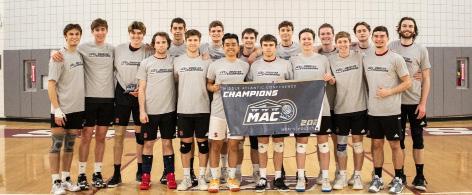 BY RUTHIE MULLISKY, SPORTS WRITER
BY RUTHIE MULLISKY, SPORTS WRITER
The Stevens men’s volleyball team has been making huge strides as they enter the postseason, including a MAC Championship for a second-straight year and a bid to the NCAA tournament, where they have already won two games against Geneva College and Wentworth Institute of Technology.
On April 15, the Ducks played in the MAC Freedom Championship match against Messiah University at Canavan Arena. They defeated Messiah with a score of 3-2 to win the MAC Championship title, qualifying the team for the NCAA tournament. This marks the ninth time in Stevens’ history that the Ducks have qualified for the NCAA tournament.
During this strong-fought game, many impressive performances came about, including from sophomore Koby Sherman, whose 16
kills and career high seven aces led him to be named MAC Championship MVP for the second season in a row. Other strong performances came from senior Percy Bickford, who had 10 kills and five digs, senior Connor Feulner, with 2 kills and four blocks, and senior Louden Moran, who had 40 assists and eight digs.
The Ducks advanced to play in the first round of the NCAA tournament against Geneva on April 21, where Stevens won with a 3-0 sweep. All 17 of the players on the Stevens roster played in this game. Bickford had nine kills, and first-year Tyler Hoke had three kills and four blocks. Sherman added seven kills and an ace while senior Alex Franke added six kills, and Moran added 21 assists and two aces. Senior Nathan Lancia had five kills and one block.
In the second round of the NCAA tournament on April 22, the Ducks defeated Wentworth
3-1 to advance to the NCAA semifinal. This marks the fifth straight victory for the Ducks, and improves their overall record to 333. These 33 wins match a program record from 2004 and 2007. This win also ended Wentworth’s fourgame winning streak. Multiple players had strong performances in this game, including Sherman with a match-high 20 kills and Bickford with an impressive 17 kills. Additionally, Feulner added 12 kills and a block while Hoke added eight kills and four blocks.
With this win, the Ducks will move on to the Final Four, where the Ducks will face Messiah University on April 28 at Stevenson University. In each of the last four meetings between the two teams, the Ducks have won every time, including both of the games from this past season. Additionally, this will mark the program’s seventh appearance in the NCAA semifinal game. Best of luck to our Men’s Volleyball team!
Stevens Baseball clinches spot in the MAC Freedom Tournament
BY KAI WONG, SPORTS WRITERStevens Baseball secured a playoff berth with a MAC Freedom doubleheader split against Lycoming College this past Saturday, April 22. The Ducks dropped the first game 4-5 but rallied to take the second game 7-1.

It was also the Ducks’ senior day, and the team celebrated seniors Leo Bristow, Chris Davis, Justin Doyle, Ben Tobio, Ryan Shea, Michael Reyes, Mark DeCicco, Anthony Pron, and Josh Casado. All of Stevens’ seniors combined for multiple MAC Freedom Pitcher and Player honors, Collegiate Baseball Newspaper Division III Player to Watch recognitions, and All-MAC Freedom teams.
Seniors Bristow, Tobio, Shea, Davis, Doyle, and Pron have all extended their collegiate careers into summer leagues and international teams out of season. Notably, se -
nior Anthony Pron will be heading to the Major League Baseball (MLB) Draft League on a full season player agreement this upcoming summer.
Game one started off promising for the Ducks, as they scored two runs in the bottom of the first inning. But after two innings, Lycoming tacked on two runs to tie things up at 2-2. Later in the fifth, sophomore Evan Pravato led with a single and then advanced into scoring position. In the next atbat, sophomore Victor Schilleci hit a single down the right field line and brought Pravato home. Junior Christian Kreiser hit a sacrifice fly to bring home Schilleci as the Ducks took a 4-2 lead. Still trailing the top of the seventh, Lycoming was able to take the lead at 5-4 with a home run from Nick Hoheb. The Warriors were able to hang on and take game one.
Lycoming was coming off hot from the first game, taking the first
score of the second game making it 1-0. Though Lycoming was on a roll, Stevens answered quickly in the second game with a run in the bottom of the first inning. Kreiser hit a sacrifice fly to left field to bring Davis home and tie the game 1-1. In a string of plays orchestrated by Jack Stafford, Michael Reyes, Christian Kreiser, and Peter Mastropolo, the Ducks went on to reel in four runs in the fifth to extend their lead to six. Stevens would hold Lycoming scoreless the rest of the game to claim the win.
The two teams finished up their three-game series in Williamsport, PA., the following day. Led by Irby who hit the game-winning two-run home run in the sixth inning, Stevens took the third game making their record 24-11 on the season and 14-7 in MAC play, clinching a spot in the MAC Freedom Tournament.
STEVENS SCOREBOARD
WOMEN’S AND MEN’S TRACK AND FIELD Penn Relays Philadelphia, PA Time TBA
BASEBALL DeSales University Hoboken, NJ 3 p.m.
WOMEN’S AND MEN’S TRACK AND FIELD Monarch Open Wilkes-Barre, PA Time TBA
BASEBALL DeSales University Center Valley, PA 1 p.m./3:30 p.m.
PA 1 p.m. Hoboken, NJ 1 p.m. SOFTBALL Wilkes University Weehawken, NJ 1 p.m./3 p.m.
MON, MAY 1
BASEBALL
St. Joseph’s University–Long Island Patchogue, NY 4 p.m.
TUE, MAY 2
BASEBALL
Play-In for MAC Freedom Championship Location and Time TBA
WED, MAY 3
WOMEN’S AND MEN’S LACROSSE MAC Freedom Championship–Semifinal Location and Time TBA
THE STUTE EDITORIAL
The Stute archives: old news…new insights
Last week, we had an Archives Deep Dive GBM, where we printed old copies of The Stute from important times in history. This included coverage of the opening of many of the dorm halls, the first woman admitted to Stevens, and both World Wars. With this GBM, I found it important to consider why it’s important to preserve archives, what we can learn from looking at old newspapers, and how digitization and online access have changed the way we interact with and use these resources.
Why is it important to preserve archives?
Archives play a critical role in preserving our collective memory and culture. Without archives, we would have no way of knowing what happened in the past, how people lived, and what they thought about the events of their time. More specifically, The Stute archives provide valuable insights into the school’s evolution and help maintain institutional memory. It’s a resource for
current and future members of the Stevens community to learn about the school’s history and ensure that this important information is not lost over time.
What can we learn from looking at old newspapers?
Old newspapers provide a snapshot of life at a particular week in time and reflect the attitudes of the people who lived then. We can use these archives to learn about significant events, social trends, and cultural shifts. It’s especially interesting to look back at these historical events from a student perspective. For example, during World War I, people were enlisting to fight, but during World War II, they were encouraged to stay in school. Additionally, when looking at the coverage of the opening of the dorm halls in The Stute, we can see how the student body and administration viewed this development and what impact it had on campus life at the time.
How have digitization and online access to old news -
MIND OF A FRESHMAN Advice to freshmen
that. Here are a couple of things that I learned (at college).
BY RACHEL ABRAHAM ‘26As the year ends, I wonder how I fit so much stuff into my shoebox of a dorm and how I will possibly get all of it out. To make things easier, I’ve been coming home on the weekends to bring back some of the unnecessary stuff that I brought. It’s just an excuse to spend more time with my cat, but my parents appreciate the extra effort. I watched many Youtube videos about what to and not to bring to college, and somehow every Youtuber got it wrong. I actually watched a Youtube video for everything; how to make friends (at college), how to stay fit (at college), and how to have a social life (at college). None of the information I gathered stuck with me. The most you can ever learn is through experience; I wish one of those Youtubers had mentioned
1. Don’t bring everything. As stated above, I brought everything. I haven’t touched half the stuff that I got onto campus. I advise keeping track of all the things you use at home and only bringing those things to campus. Maybe splurge a bit on over-thecounter medicine. And a hobby; if you like art, bring some supplies (not all of them).
2. Taking care of yourself isn’t hard. For some reason, everyone made it seem like it was impossible to keep your room clean. The most mentally draining thing ever. It’s not. It’s not that serious. Pick a day to do your laundry to find a machine, and you’re set. I will say that being sick is tough. Better not to mix every medication you brought on campus in the hopes that you’ll feel better. Just call a parent and ask what to take. And stay out of Pierce (if I got a nickel for every time I got food poisoning, I’d have two nickels. Which isn’t a lot, but it’s weird that it happened twice, right?)
3. Professors are very nonchalant.
I can’t tell you how often
paper archives changed the way we interact with and use these resources?
Digitization and online access have revolutionized the way we interact with and use historical archives. With digital archives, we can access information without having to physically visit the library and we can do things like host archives deep dive GBMs. The oldest copy of The Stute is from 1904 and digitization has made it easier to preserve and share fragile and rare materials like this. By digitizing our old newspapers a wider audience is able to access and engage with these resources. It’s also worth noting that looking back at old newspapers can reveal some uncomfortable truths about our past. For example, the issue from 1971 that covered the first woman admitted to Stevens had a lot of ads for birth control, condoms, and abortion, significantly more than any issue prior. Additionally, The Stute extensively covered the beginning
I formally emailed each of my professors asking for extensions or explaining my absences, making sure every sentence was perfectly phrased for them. I would actually panic if they didn’t respond within a day. This is what I got back every time: “OK.Get Outlook for iOS.”
4. It doesn’t matter if you go out or not.
I was peer pressured into going out way more in high school than I am at college. You were a loser if you didn’t party in high school, but no one cares here. If you skip a party, you’re not missing out on anything; there will always be another one.
5. Maintain the relationships that matter.
Not everyone is meant to stay in our lives, especially the people we meet in these years. It’s OK to let go of some people, and you should let go of others. Don’t hesitate to cut them off. These are supposed to be the “best years of your life.” It’s much better to focus on people who genuinely love and care about you; nurture those relationships.
Hopefully, some incoming freshmen will read this and gain something from it. May the odds be ever in your favor (just kidding, you’ll be fine).
Everyone forgot how to read
BY OFF CENTER
- Satire -
There is a crisis! No one knows how to read anymore! This is objectively the worst possible medium for announcing this crisis and coming to a conclusion because of the aforementioned nature of the crisis. But we must start somewhere.
Let’s start with how people started to learn to read. Hopefully, this will give us a clue on some action items and deliverables we can focus on bringing back reading. Well, most people start with simple books like Frog and Toad (an all-time classic), then read chapter books (shoutout to Dink, Josh, and Ruth Rose), scientific articles, and then
spend most of their career reading short emails.
What could have possibly caused everyone to forget how to read? Perhaps a lack of practice. But this seems unlikely because our internal statistics show that a record 300,000 people read our article about the Pit last week. If this is the case, then there’s a wonderful archive of past Off the Press articles that represent the highest standards of journalism and would make excellent reading practice. Maybe everyone bumped their heads in a weird way. This would be a massive statistical anomaly if everyone hit their head just right at the same time, but way more plausible than a lack of practice. To fix this, we’d probably
just have everyone unhit their head, but gently touch it to the surface and bring their head back rapidly like they are pulling the impact out of the surface.
Why is this a problem?
Society depends on communication. If you don’t understand that, then you don’t live in the society we all live in because, we live in a society. Written communication is among the most powerful tools for communication, but people need to be able to read. For example, they need to read stop signs and speed limit signs. Those are important. To be clear, no one has forgotten how to write though, which is why the author can still produce this article. Do we have any other
of the Iraq war in 2003, but their approach was lacking in sensitivity as they included graphic images of victims of the war. Preserving newspaper archives like these is crucial as they serve as a historical record of events and attitudes of the time from a student perspective, particularly when it comes to sensitive topics. While coverage of some topics may have lacked sensitivity in the past, I think it can serve as a reminder that progress is not always linear. By acknowledging the mistakes of the past, we can learn from them and continue to move forward to improve our understanding and treatment of sensitive issues.
As we move forward, it’s essential to ensure that we continue to preserve our archives and make them accessible to everyone. At The Stute, we are actively looking to appoint someone as our archives liaison to work on digitizing our archives and maintaining communication with the Stevens Samuel C. Williams Library.
SENIORITIS
Isabella Ziv ‘25 Editor-in-Chief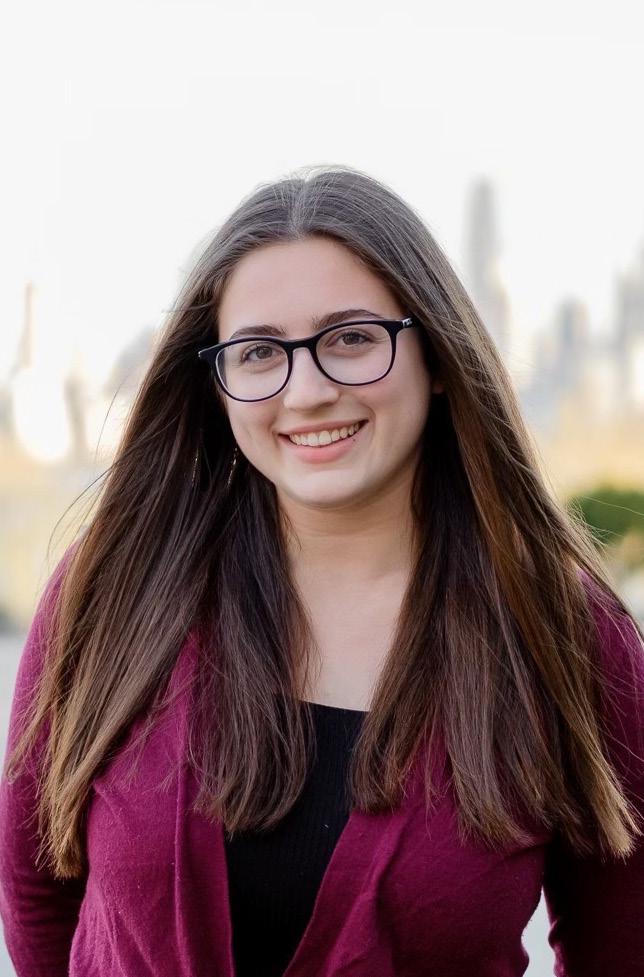
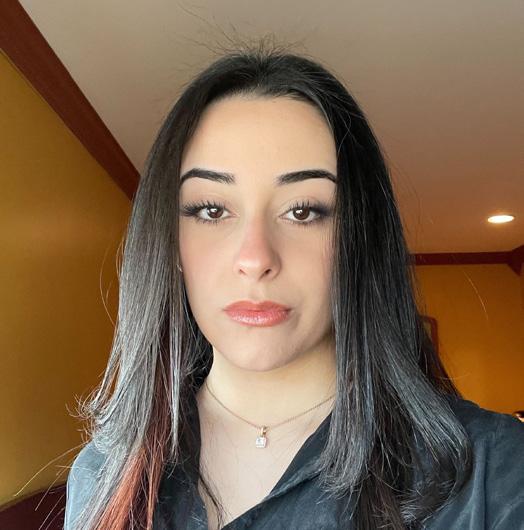
An end means a new beginning
week for my first semester of Stute writing. Additionally, as I became more consistent and a better writer, I became the sports editor. It was an extremely special time where I felt so loved by the Stute leadership, and I was doing something great.
BY TREVOR DAMEIKA ‘22Entering my freshman year at Stevens in 2019, it’s been an interesting journey. From coming in as a shy sports writer to a flurry of editing roles to being the confident writer I am today, The Stute has given me a platform to redefine myself not only as a writer, but as a person. I don’t want this to be my Stute autobiography, but I want this to inspire you to be confident in yourself.

Entering Stevens in 2019, I was writing about sports for a website where I wrote about a plethora of sports events. However, as I entered Stevens, where sports are not popular to be written about, my dad mentioned that I should be a part of the school newspaper and write about sports for them. Within a week, I met with the athletic director and would go on to write two articles per
With the help of the leadership of the time, I became Digital Manager and integrated myself more within the organization. As this was during COVID, The Stute became completely digital, and new articles were to be advertised each day, which added to daily stress. This became continually difficult, and the Editor-in-Chief of the time vacated their role due to illness.
However, as a result, I was voted to be Managing Editor, secondary to the new Editor-in-Chief of the time. The Stute was my home and I was teaching and training new members on a daily basis. It was home, and I was creating new articles each week for Stute members to take while keeping everything balanced.
Three months later, The Stute performed elections again for Managing Editor. I was supported by the Editor-In-Chief of the time, and I hoped to be voted for a second term. Instead, I lost. That stung. I felt lost
within an organization that I thought did not want me to help run them. However, a loss or a defeat doesn’t own you, even if it is the only thing you think about.
I became treasurer of a different club (Stevens Christian Fellowship) after losing the election and stayed on as News Editor. I did my best where I could and worked to help those who needed it. I completed my senior year as an opinion writer. The Stute was and has been a very strong organization, and those that continued it after I entered a minor role have done a great job.
My time with The Stute has taught me a lot about what it means to write and bring your thoughts to life through writing. I have had teachers and students who have seen my writing and called me out in class just to say I did a good job capturing certain meanings. I would have loved to dedicate more of my time and appreciation to lead this organization, but sometimes just writing is good enough.
You are stronger than that defeat in your life. That defeat doesn’t own you. You must let go of it because it just wasn’t meant for you. Build your own path even though the unexpected gets in the way. And I did.
alternatives? Well, a lot of musicians will have a lot of artful metaphors about communicating through music, which admittedly does a powerful job of conveying emotions. Unfortunately, the classic musical staff, while not included in things people forgot how to “read,” does not convey information like the most recent quarterly expense reports very effectively. We could also try doing everything in picture books, but again, they don’t display data with tables very well. We ask our readers, (this seems like it won’t work all of a sudden) to submit ideas and tips to us. Why do you think everyone forgot how to read? What do you think we should do about it? We are just specu-
lating here. We will do our best to get to all the information you submit, but of course, you don’t know that we’re requesting it, and if you did submit something, we won’t be able to read it. And then in our follow-up article about it, no one would understand the conclusions we came to. This is truly an unmitigated disaster!
Hopefully, the issue resolves itself. If there’s one thing we’re good at at Off the Press, it’s ignoring problems. We report on as much as we can, but at some point, we have to draw a line and focus on what’s important. And everyone forgetting how to read is important. So we decided not to write about anything else this week.
My last match
BY KYLE SLENDORN ‘23The places I’ve traveled, the things I’ve learned, my goals, my dreams, my family, the friends I’ve made, the big wins, the small wins, the plane rides, the car rides, the bus rides, the tournaments I’ve won, the losses I’ve had, the bad times and the good times: everything has led me to where I’m at right now.
As I was walking off the wrestling mat after my last match, I began to choke up. The thought that my wrestling career was over came crashing down. Until that moment I had pushed it away. I went about everything like normal, knowing that when it was all over, I would be met with a rush of emotions, except I didn’t really know how I was going to feel. I spent just about 20 years wrestling; I simply don’t know what life is like
without it. Coming out of high school I was unsure if I even wanted to pursue wrestling in college. The season is long and consuming. From October to March, everything I did revolved around wrestling. In the other months, wrestling was always in the back of my head. To take on another four years didn’t seem like something I wanted to do. So, I ended up not wrestling in my first year of college. Well, only for about three months. When the season came around and I saw my peers gearing up and competing, the itch came back. I didn’t regret my decision, but knew that I would have to return.
That year I competed in two open tournaments training on my own. The next year I transferred to Stevens. However, my outlook on wrestling was different. I wasn’t going to approach the sport the same way I did in high school. In high school, I was extremely strict with myself. Set in my ways and not letting myself deviate. It helped me achieve most of my goals, but also made me miserable. From cutting weight to training, I was not pleasant to be around. The crazy thing is, I wouldn’t change it for the world. But starting new in
THE CONVERSATION
college, I wanted to find a balance.
After four years of college wrestling, I think I achieved that balance. The balance of working hard but not hating the sport. For wrestlers, it becomes easy to hate the sport. Especially after many years of doing it. The give-to-get ratio is not even. Wrestlers give a lot more than they get. Their training

The Biden administration and electric vehicles
notes that electric vehicles “remain less competitive against conventional gasoline-powered cars and light trucks serving the mass market.”
BY TASHA KHOLSA ‘25Introduction
On Wednesday, April 12, the Environmental Protection Agency (EPA), at the direction of the Biden administration, proposed that two-thirds of passenger cars and a quarter of trucks sold in the United States should be electrically powered. These are the “nation’s most ambitious climate regulations to date.”
Campus Conservative, Marisa Powers


In my opinion, there are several issues with the rules proposed by the EPA. According to a poll from AP survey, “19% of U.S. adults say it’s ‘very’ or ‘extremely’ likely they would purchase an electric vehicle next time they buy a car [...] About half - 47% - say it’s not likely they would go electric.” By trying to limit the production and sale of gas-powered vehicles, the administration is controlling what consumers can and cannot purchase.
Electric vehicles are significantly more expensive than gas-powered vehicles, have less range, and the amount of charging stations in the United States are limited. More electric vehicles would also increase our reliance on China. China “controls 60% of the world’s lithium mining, 77% of battery cell capacity, and 60% of battery component manufacturing.”
Relying on China so heavily
BY MARISA POWERS ‘23could cause our own manufacturing and economy to suffer because of how much we would end up importing from them.
It is also important to note that electric vehicles would not have as much of an impact on the environment as the administration claims they will. An article from the Wall Street Journal states, “the Biden plan affects only the U.S., with 12% of the global fleet, so 0.36%. And swapping out a gasoline engine for a battery eliminates only half (at best) of lifetime emissions - so 0.185.”
In my view, the EPA’s proposed rules would do more harm than good. The Biden administration should not go to such drastic measures when it will have little impact on the environment.
Campus Liberal, Tasha
 Khosla
Khosla
While I believe that electric vehicles will greatly help the U.S. reduce emissions, this proposal raises more questions than it answers. The plan itself seems idealistic and not feasible, given the current state of the automobile industry.
The Wall Street Journal cited a Goldman Sachs report detailing how “electric-vehicle consumer and battery-production tax credits alone could cost taxpayers $523 billion over 10 years.” Moreover, this report
Currently, many Americans simply are not interested in electric vehicles, primarily because of “range anxiety,” which is the belief that the battery will run out of charge during long-distance trips and cost concerns. The Deloitte 2022 Global Automotive Study found that 69% of Americans “said their next vehicle won’t have any kind of electrification, while only 5% saw their next vehicle being an EV.” Additionally, the study found that 53% of the respondents “didn’t want to pay more for alternative powertrains. While tax credits and other incentives help, EVs can still carry a price premium over comparable internal-combustion vehicles.” So, electric vehicles really only appeal to the affluent who do not have to worry about driving for long distances.
Yet, it is worth noting that this proposed plan is a big step for the Biden Administration in committing to climate regulations. Without a doubt, the transportation industry will need massive reforms in order to encourage the public to actually purchase these vehicles. Only then will this plan have a chance of making a difference in helping the environment.
Conclusion Both sides agree that the EPA’s proposal has shortcomings that need to be addressed in order for this plan to be feasible and have an actual impact on the environment. Also, both sides agree that the auto industry will need reform to accommodate this plan.
can seem to be pointless. What I learned from wrestling and what helped me to love the sport again was to enjoy the process. Understand that the bad days hurt more than the good days feel good. That failing is part of the process but learning from the failures is the reward. One of the greatest feelings I got was when I would execute a position that I previously
failed at. Entering my college wrestling career my main goal was to enjoy my final years of being able to play a sport competitively. For wrestlers that is harder than it sounds but I believe I accomplished my goal.
Before my last match, as I stood on the mat waiting to start, I looked up in the stands and saw many faces — the faces of my family, friends, and long-time

FOR MATH’S SAKE The Innovation Expo: A good day for math!
like in an explosion), and optical fiber laser amplifiers. These have a hefty deal of math, but that should not deter you from stopping by — the applications of these works are manifold and significant.
BY CHARLES BEALL ‘22Today marks the 2023 Innovation Expo, a culmination of sorts for the seniors at Stevens who have worked for the past school year on design or thesis projects. The university treats today with lots of fanfare and excitement, a chance to showcase how their academic programs provide their students with the skills to complete and present innovative projects across STEM, along with the humanities, arts, and social sciences.
Today excites me, however, for its preponderance of mathematics. In previous years, I loved shuffling from one poster board to the next and learning about the math at work in pretty much all the Expo projects. This math is sometimes subtle, but it lays the foundation for the day and moreover provides a common language for everyone to gain an appreciation of their fellow students’ work.
I’ll be situated at the math and physics section of the Expo, where some of my good friends and I will have posters on numerical methods for partial differential equations, fragmentation problems (which involve the breaking of one object into multiple objects,
But math in projects from the School of Engineering and Sciences doesn’t stop there — far from it! A Chemistry & Chemical Biology project characterizing liquids in e-cigarettes involves principal component analysis, a mathematical technique for pulling out important statistics from large data sets. Biomedical Engineering has produced projects on implant-based treatment, which requires its own share of data analysis and modeling of the brain and body before the implant can be constructed.
If Computer Science is your thing, you can find projects on 5G cybersecurity and transit planning — the former utilizes the introduction of noise to learn more about 5G networks (this noise trick is a common mathematical tool), while the latter is the traveling salesman problem at work, with some exciting additions. Likewise, for Mechanical Engineering, the “ARGOS” projects give workfrom-home employees a way to better communicate over virtual calls, involving data sensors and moving outputs.
What about the other schools? Naturally, they have their fair share of math too — the School of Systems and Enterprises has applied machine learning or AI to many of its projects, from a system of pesticide distribution to an auditory
supporters of my career. They began to cheer, and I had to look away. My eyes started to swell. I laughed at how great of a moment it was for me. How happy I was that I decided to wrestle in college. How thankful I was to the sport that gave me so much. Then the referee called me in to start for the last time.
app that aids people with visual impairments. The School of Business features time-series analysis, stochastic modeling, and principal component analysis across several of its research projects. Even in the soon-to-berenamed College of Arts & Letters, you can find projects utilizing animation, music technology, and quantitative data to produce brilliant art and theses with powerful arguments to consider in the social sciences.
Some of these connections to mathematics may seem like a stretch, but I truly believe that if you go to any one of the tables at the Expo today and start asking questions, you and the seniors who’ve worked on these projects will find them. It is a good example of math’s inherence — it is all around us, just waiting to be found and harnessed.
Of course, even if I got to write every article in the Stute this week, I wouldn’t have enough space to cover all the amazing work of the members of the Class of 2023 that will be on display today. The projects I referenced are merely snippets, and even those I covered with one- or two-sentence blurbs, so again, I encourage you to go and see for yourselves just how innovative—and mathematical—this day is. It’s a chance for us seniors to take one step closer to graduation and share our hard work, while the rest of campus can take note and inspiration as they think about their encounters with math in future Expo projects.
MUSIC TO MY EARS
Bedroom pop for bunkering down in finals season
BY KAYDEN CANNILLA ‘24When the stress of finals is overwhelming, music is therapeutic. It’s helpful to set a tone to drown out the dread of an upcoming exam and focus on figuring out what you know. However, sometimes that focus re -

SPOILER ALERT
quires silence; I do spend less time listening to music during finals crunch because I need my full attention, or just because I need to work by myself for a while. When I’m overwhelmed by assignments, the added noise is distracting or further distressing because I feel bombarded from all fronts. Music therapy is shown to help with memory, improve coping, reduce stress, improve self-esteem and more so I try to still dedicate listening time even as my workload increases.
Listening to playlists or albums that I know the order of helps me keep track
of time; I put on an album that lasts as long as I want to dedicate to the task and wrap up when the album ends. I find this works best with instrumental tracks (so that I’m not distracted by lyrics), or albums that I already know so that I can keep track of the passing time based on where I am in the album. I lean towards slower, more melancholy tunes these days (the most upbeat song that’s been stuck in my head lately is “Amoeba” by Clairo). Listening to depressing music is unlikely to lift you out of a funk, but there is comfort in the relatability of the lyrics. I find myself drawn to
soothing lyrics that reassure me the world is so much bigger than a tough exam. Bedroom pop artists like Cavetown and Sidney Gish have sweet, clear voices with lyrics that speak to the fears of failure that students often have. “Remember when we felt like animations and didn’t need A grades for self-validation?” Cavetown sings on “Hug All Ur Friends,” a painfully nostalgic tune searching for simpler times. In a competitive environment like this, it’s easy to forget that passing grades are still impressive. Sidney Gish speaks about the pressures of comparing your-
self to others in “Imposter Syndrome,” asking, “Every other day I’m wondering, what’s a human being gotta be like? What’s a way to just be competent?” I also find Chloe Moriondo and Courtney Barnett to have similarly resonating lyrics, though the instrumentals stray from the soothing melodies and tap into restlessness and indignation of feeling like you’re not good enough. Barnett describes the experience of a panic attack in her song “Avant Gardener,” which really spoke to me when I was freaking out over my Chem II final. Moriondo’s song “Bugbear,” describes how excelling at
The Mandalorian (Season Three): There’s potential, but what’s missing?
academics is not always personally satisfying, “I feel so brain dead next to you… When I’m thrown into the adult world where they do things that I never learned how to do I guess I’ll live in a swamp or a tree.”
Remember to take care of yourself as finals close in. It can be easy to fear that you aren’t doing enough, but the weeks of dedication during the semester have not been for nothing. Eat, sleep, and general well-being come first. Try to fit in some exercise in your study breaks, walk along the waterfront in the nice weather, listen to music, or call your family. Godspeed.
BY JULIA WIERZBICKI ‘23I just finished the end of The Mandalorian season three and I enjoyed it. There were plenty of action sequences, fun Grogu action, and I thought the return of Moff Gideon was pretty cool. There were even some
moments I really wasn’t expecting like Grogu taking on more intense combat and Gideon’s voice, while he wore his helmet, sounding like a mix of Vader and Kylo Ren. That being said, I couldn’t help but feel a little… empty at the end. I feel like this is happening a lot after Marvel and Star Wars shows on Disney Plus. I see many people complaining about the people who don’t like the new series online. They comment things like, “You have more nerdy content than ever before. Why are you still not happy?” And the answer is I may have some idea, but I’m not entirely sure.
BOOK OF THE WEEK
I think the first reason for this unsatisfied feeling may be an oversaturated market. I remember when The Force Awakens came out and we had to wait years for more Star Wars content. Sure, Rogue One was released in between, but there were no other movies or television shows to watch. But now it seems like there’s a new show to watch every few weeks. Bad Batch, Andor, Ashoka, Obi-Wan Kenobi, The Mandalorian -– even though I love the stories and want to watch them, I can’t keep up. It’s almost like there’s just too much of a good thing. Instead of watching on my
own time, when I’m ready to set aside the time, I’m forcing myself to watch the content as soon as otherwise lest I fall behind or get spoiled.
The other issue (for Star Wars specifically) could be the timeline these stories are taking place in. Most of these shows occur between the original trilogy and the new trilogy or, like the Bad Batch, happen even earlier, before episodes 4 through 6. Therefore, it seems like these shows don’t have much impact on the modern Star Wars universe. Sure, it’s fun to explore lore and learn more about the backstories of some of these
The Dead Romantics, by Ashley Poston
ing not to fall in love with a ghost. Reading this book made me realize it would be a perfect plot for a movie. By saying this, I do not mean the book was as enjoyable as the other books I have read in the past, but it was refreshing compared to the books I usually gravitate towards.
BY VICTORIA YASHCHUK ‘26The Dead Romantics by Ashley Poston is a novel I did not expect to be satirical. It is a modernized version of a story about a girl trying to find her place in the world, all the while try-

Poston writes about Florence Day, a college student trying to escape from her past and pursue her dreams of being a successful writer, to embody her artistic ability. That being said, it is worth noting a crucial component of the plot: Florence ghost-
writes for the famous Ann Nichols, writing strictly happily-ever-after love stories. To keep the story interesting, Poston throws in an unusual plot twist: Florence has the ability to see and communicate with ghosts.
As the novel begins, Florence’s main problem is not being able to finish the latest manuscript for Ann Nichols; Florence does not believe in love anymore, nor that she will ever have her once-in-a-lifetime love story after being betrayed by her ex-boyfriend, a successful author by the name of Lee Marlow. This being
the case, Florence has to explain to her new editor, Benji Andor, that she needs another extension — asking for her second extension within the span of a year. Benji refuses, causing Florence to emotionally spiral.
While trying to finish her manuscript, Florence’s best friend, Rose, drags Florence to a bar, where Florence bumps into Benji. Benji and Florence share some mutual feelings until Florence’s family calls her to tell of the news about her father, Xavier Day, passing. Rushing back home to South Carolina, Flor -
Comic Corner
BY JOSEPHINA STRANOcharacters, but it’s hard to really feel the stakes because we already know what things are going to look like years down the line. And these characters are almost never mentioned later on, or if they are, it’s very brief. That’s the problem with having some many different writers and series happening on different timelines: the universe begins to lose momentum.
Now, don’t get me wrong.
I don’t think Mando season three was bad. I think it was good, better than most of the remake shows I’ve seen on Disney Plus in the past few years. But that doesn’t mean it’s not suffering from
similar issues. I’m no expert, but if Disney wants to keep momentum for these shows and stop people from checking out, I believe they need to slow down releases and spend more time on cohesion and story. Not just for one series at a time, but think about how they interconnect and affect each other. That’s how you make an effective series. For now, I’ll try my best to catch-up on the old content and get hyped for the upcoming Star Wars series for the rest of the year. But Disney Plus needs to make some changes or they’re going to end up driving away their fanbase.
ence helps her family with the funeral while trying to cope. What surprises Florence, however, is the ghost of Benji Andor showing up on her doorstep in South Carolina.

Killed in a car crash that same night Florence rushes back home, Benji’s ghost seeks answers and solace from Florence. As the novel continues, Florence and Benji’s ghost build a strong foundation between themselves, one of trust as well as truth. Florence and Benji help each other come to terms with who they are (or were) as people. Unsurprisingly, Florence and
Benji fall in love, though they understand it is not the best thing for them. While this book has its pros, like having a cliché plot turned interesting with the ghost factor, the plot is quite predictable. The Dead Romantics does have a “surprise” factor with the sudden death of Benji Andor, but it does not have the “wow” factor that keeps readers at the edge of their seats. Overall, this book is worth the read if a reader is willing to try out something new or wants a “break” from their usual genres and literary styles.
Opinion
HISTORY OF THE DUCKS
The Davidson Laboratory and the Samuel C. Williams Library: Centers of Learning and Innovation
the Navy.
BY EVAN PAPAGEORGE ‘26Here at Stevens, perhaps the most important aspect is knowledge, whether it be learning in class, gaining experience through Co-Op or internships, or conducting research in many of the labs. It is this quest for knowledge that fuels two of the largest and most significant buildings on campus: The Davidson Laboratory and the Samuel C. Williams Library.
GIRL TALK
The beauties of being a woman
last piece, I asked myself and the closest women in my life: “What are the beauties of being a woman?”
To me, the best part about being a woman is female relationships. I recently came across a quote that sums my feelings up perfectly: “Women’s friendships are like a renewable source of power.”
BY JORDYN RAMELLI ‘23Disclaimer: This column includes the opinions of mine and women that are important in my life. What they state applies to anyone, regardless of gender.
Well, this is my final column for the Stute (I could literally cry reading that). I started writing this column two years ago, so nervous and unsure where it would take me. I was afraid to share my thoughts, continuously asking myself “Who is interested in what I have to say?”

Over time, I became comfortable expressing myself and I quickly developed a passion for opinion writing. I owe so much to this lovely column, this amazing organization, and everything I have learned along the way. I grew up a bit while writing Girl Talk, and I am honored I got to spend time as the writer of this column. For my
Whenever I need a pickme-up, laugh, support, or a shoulder to cry on, I know I can rely on the female relationships in my life. They continuously lift me up when I am down, and I am so extremely grateful for that. I cherish our time together, whether that be exploring New York City together, driving through our small town blasting our favorite childhood songs, cooking each other sweet treats, playing board games while drinking tea, and so much more. My time spent with family and friends will forever be my favorite. I saw a TikTok yesterday that stated women didn’t have passions or hobbies, and I found that to be such a funny statement. One of the things I love about women is our endless ambition, passion, and drive for what we love. All of the women in my life have something so special that they are passionate about, and I love to hear
DEAR CLAIRE AND ETHAN...
Q: Help, I hate the city!
never run out of things to do.
them talk endlessly about what makes them shine. The women in my life are the most hard-working and dedicated people I have ever met. For me, I am passionate about books, writing, cats, Studio Ghibli films, friendships, walks by the pier, softball, and always bettering myself.
I want to end my time writing for Girl Talk with my favorite people in the world, telling me what they love about being a woman. The following are people who I hold dearly to my heart, sharing their thoughts with me.
Jennifer Ramelli: Endless opportunities for women
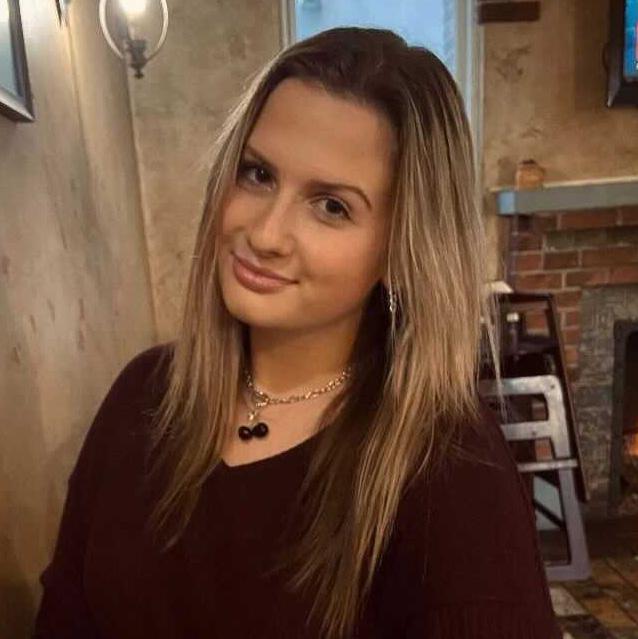
Jamie Ramelli: Getting a degree in a male-dominated field #emergencymanagementslay
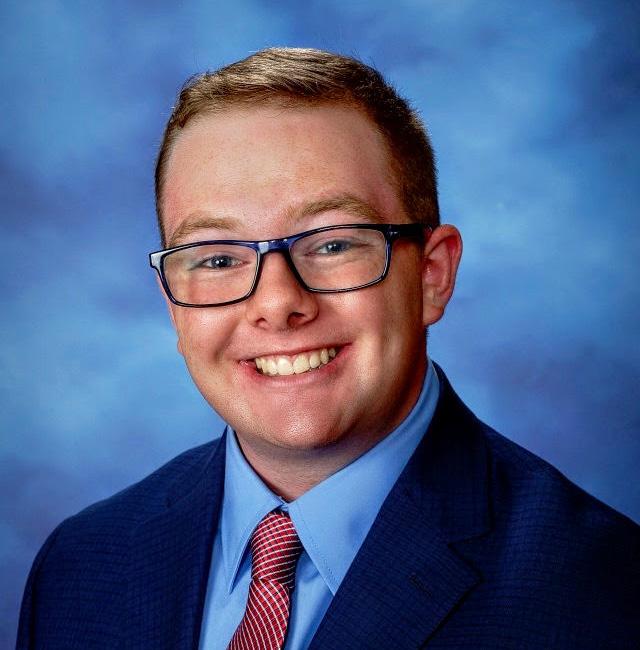
Linda Novell: Becoming a mother and grandmother
Suzanne Carbone: Makeup is our jam!
Katie McIntire: Singing
Taylor Swift in the car with the windows down
Olivia Szajdecki: Getting ready together before going out
Ava Matino: Finding beauty in the simple things, like enjoying a cup of tea or watching the ocean on a summer night
Delia Setola: Doing thoughtful things for your
besties
Wiki Jurgowska: Dancing in the kitchen alone while baking
Serena Platt: The natural empathy we have for others
Sofie Katsikiotis: Giggling with the girlies
Pooja Rajadurai: Knowing I have a legacy of strong women who inspire me and future women to inspire
Emily Giuca: Our collective camaraderie and generosity with tampons
Nikki Farber: Sleepovers and telling each other everything
Kyra Hill: Sharing clothes, makeup, accessories, Lexi Cendan: How we can bond over universal female experiences
Kayla Fittipaldi: How girls always pitch in when another girl needs help, even if they don’t know her
Jaya Patten: Oversharing
Tessa Kravchenko: Being able to share emotions and listen to each others’ experiences With that, I wrap up my final column and my time with The Stute. I wouldn’t trade these last two years for anything — thank you so much for reading my work!

With love,
Jordyn RamelliDuring the years of President Harvey Davis, Stevens experienced an influx of new buildings and facilities to help the school grow, including dorms like Palmer and Jacobus (as discussed last week), and the addition of Peirce and Kiddie Halls conjoined to the existing Morton Laboratory to make a U-shaped complex. One new building during the term of President Davis that stands out is the innovative Davidson Laboratory.
For context, Mechanical Engineering professor Kenneth S.M. Davidson, after whom the lab will eventually be named, had been conducting experiments on different ship designs using models in the Walker Gymnasium swimming pool. As a part of the United States military’s preparations for the possibility of war in the 1930s, Professor Davidson was given funds to create a towing tank in the Navy Building (located where the Babbio Center currently is). With those funds, Davidson created Towing Tank #1 in 1935.
For the rest of the 1930s and into the early 1940s, Professor Davidson worked with the Navy to test different ship designs and the efficiency of the different hull types with great success. After the attack on Pearl Harbor on December 7, 1941, as America was thrust into a war on two fronts, the Navy needed more ships that were faster, more durable, and more powerful. To implement this, Professor Davidson was given the funds to construct two new towing tanks, dubbed Towing Tank #2 and Towing Tank #3, in a brand new structure that would give Davidson more control, simultaneously allowing for the security requirements needed for a program developing new ships for
This new facility, which takes its namesake after Professor Davidson, sits along Hudson Street spanning most of the block between 6th and 7th street. It was designed by Voorhees Walker Foley & Smith and constructed by Hegeman and Harris, and features a low-lying design with linearly symmetrical windows. The building serves as a private building while also fitting well as the transition from the Stevens campus to Hoboken neighborhoods.
While Davidson serves as a center of discovery through experimentation, the other focus of this article serves as a center of learning through research: the Samuel C. Williams Library. While the school’s library had moved around over time — from Edwin A. Stevens Hall then moved to the Lieb building in 1932, President Jess Davis decided, in order to accommodate the increasing student population, to create a new library.
Located in the center of campus, it faces the Wittpenn Walk and the newly installed Torchbearers sculpture (installed in 1964 in collaboration with artist Anna Hyatt Huntington). Designed by Perkins and Will, the library is a great example of the combination of brutalism and the architecture of the early 20th century (many allusions to the famed Frank Lloyd Wright can be found throughout the structure). The ground for the building was broken in 1966 with the building being completed and opened in 1969.
The building’s name comes from Professor Samuel C. Williams. Williams was a graduate of the Stevens Class of 1919 and was the curator of the library and the main advocate for the construction of the new building. Sadly, Williams passed away shortly before the completion of the library in 1968. President Davis dedicated the library to Williams during the dedication ceremony on May 17, 1967.
Also installed in the library are a multitude of artistic works, the most famous of which is the Stevens Mobile and Hard To Swallow by mobile inventor and Stevens graduate Alexander Calder, along with Moon and Stars by Mary Callery. Both recognize the innovation of the university and pay homage to the humanities at Stevens.
The Davidson Laboratory and the Williams Library both represent the continued devotion Stevens has towards learning and innovating for the future, a true continuation of the legacy of Edwin A. Stevens and his “Institute of Learning.”
BY CLAIRE HANNAN ‘24Most of us chose to spend four years in Hoboken when we were 17 or 18. At that time, living in a city seems great, everything is conveniently close, there are great job opportunities, and you’ll

While I know a lot of people maintain this perspective throughout their four years and go on to live happily in the area, some realize that they would be much better off living in the suburbs or country. There are a lot of reasons that someone might decide this area isn’t for them like the noise, speed, or even the lack of mountains and swimmable rivers. No matter what your reason is, it’s perfectly ok. I personally have been struggling with the idea of setting up my life here and having to drive hours anytime I want to hike a real mountain and
never being able to see the full night sky. If your reason has more to do with the speed, attitude, or even prices of the New York/New Jersey area, I would urge you to travel a little bit to other cities. There are so many places in the world to live, all with their own vibe (for lack of a better term) and I’m sure one will work for you. If you’re like me and want to live in the middle of nowhere, then maybe you can do what I’m doing: graduate as quickly as possible, hike as much as possible, and find careers that you don’t need to live near a city for.
BY ETHAN KLESCHINSKY ‘24This isn’t a question, you aren’t asking for advice so I don’t know what you want me to tell you. I have one job with The Stute, and it is to provide answers to the life questions that you may be
struggling with. If you want a solution to your problem
I would have to advise either getting over yourself or maybe doing some research before picking a school.
It is common knowledge that Stevens is in the city of Hoboken, which is right next to the Big Apple, which can be overwhelming I’ll admit. But you should have considered your distaste for city life before committing to a school that has easy access to one of the greatest cities in the world. If you want to get out of the city the best advice I have is to transfer or drop out and return to the middle of
nowhere from which you came. If the boonies made you happy, you can always go back. It is not too late to give up on being college educated. There are also a number of universities I’m sure you can transfer to in the middle of nowhere; I’m not going to do the research for you but I’m sure they exist. You could also always just become a hermit and stay off campus to avoid the stresses of the city, that seems like an absolute blast and definitely isn’t terrible for your mental health. Either way, if you want advice I advise asking a question for the future.
Hard Puzzle: 0.65 difficulty




ROVING REPORTER


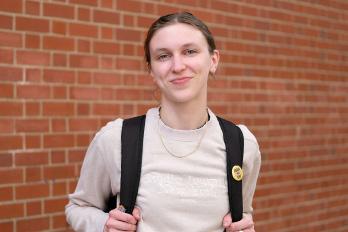
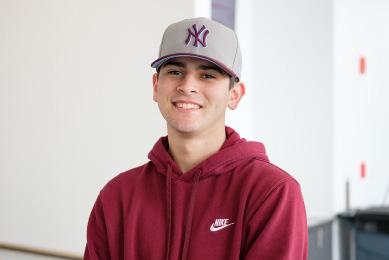


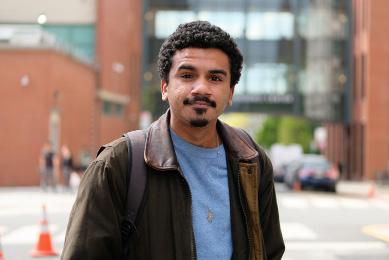
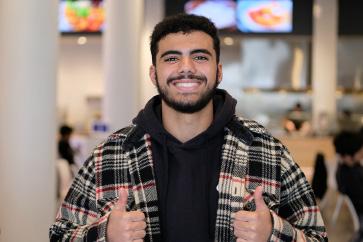 By Rafael Lee Li
By Rafael Lee Li
ANSWERS:
LAST WEEK’S ANSWERS:
Hard Puzzle: 0.62 difficulty

“What are you most looking forward to at Techfest?”
